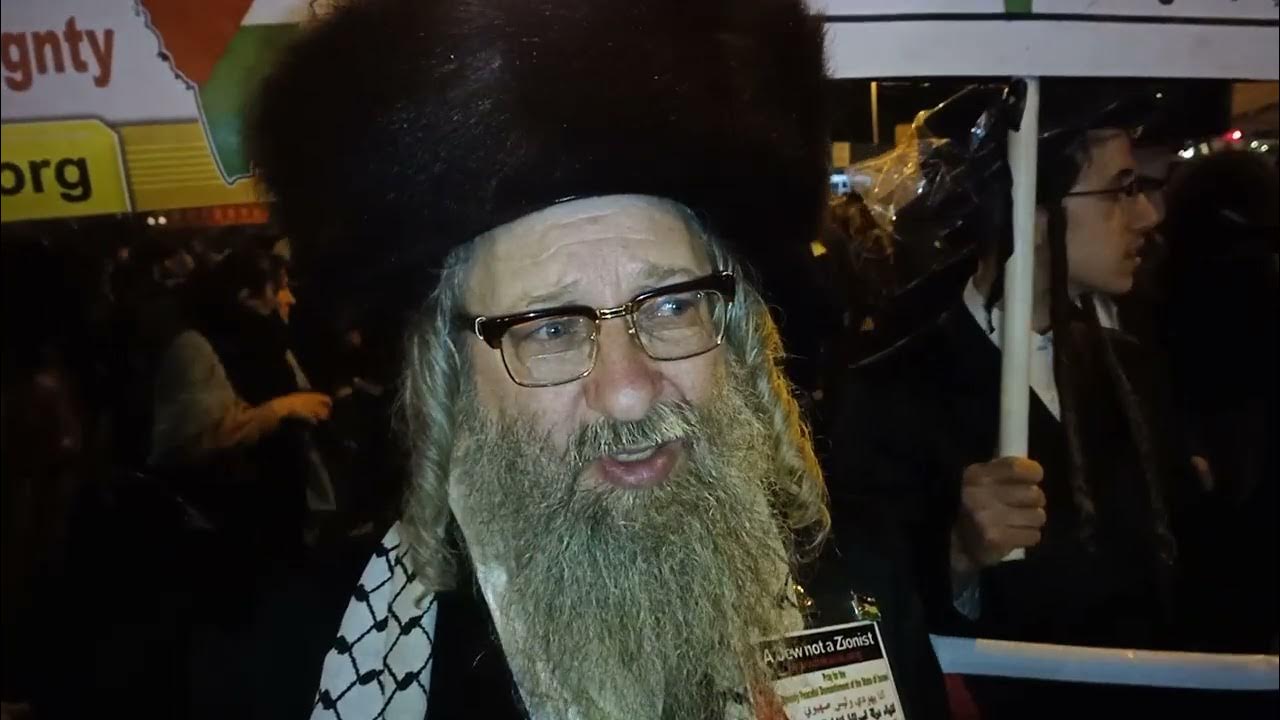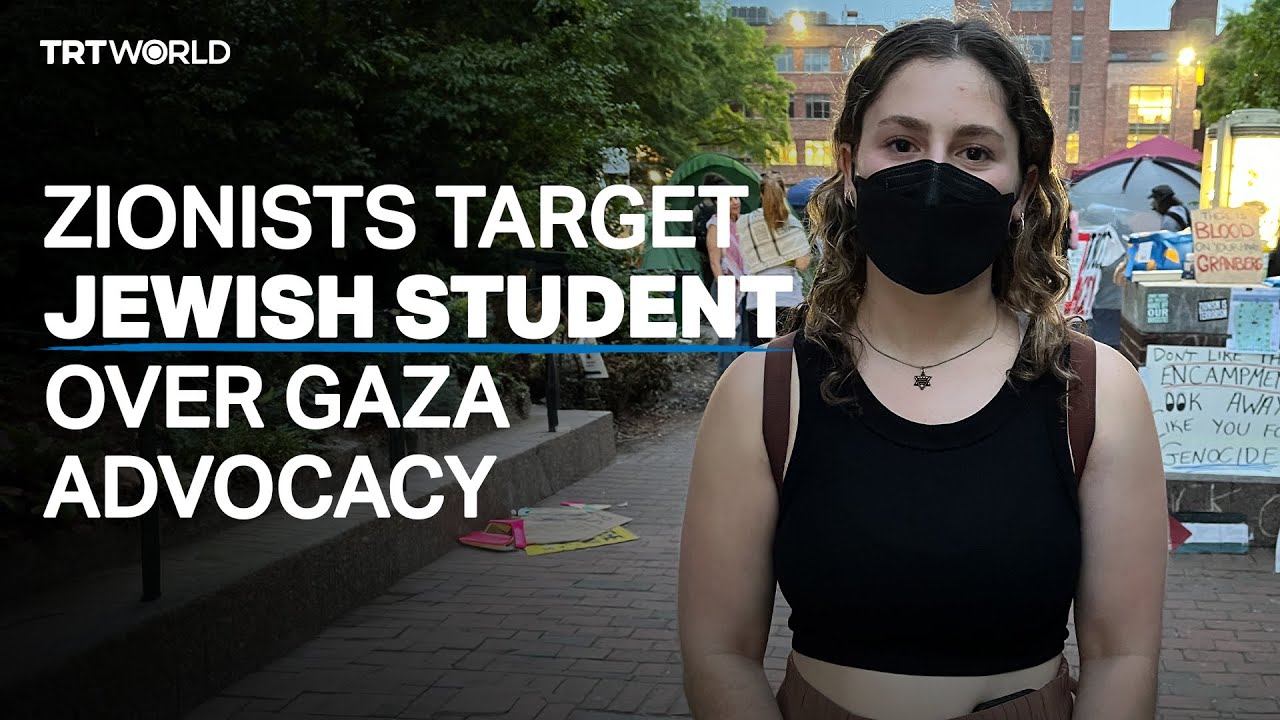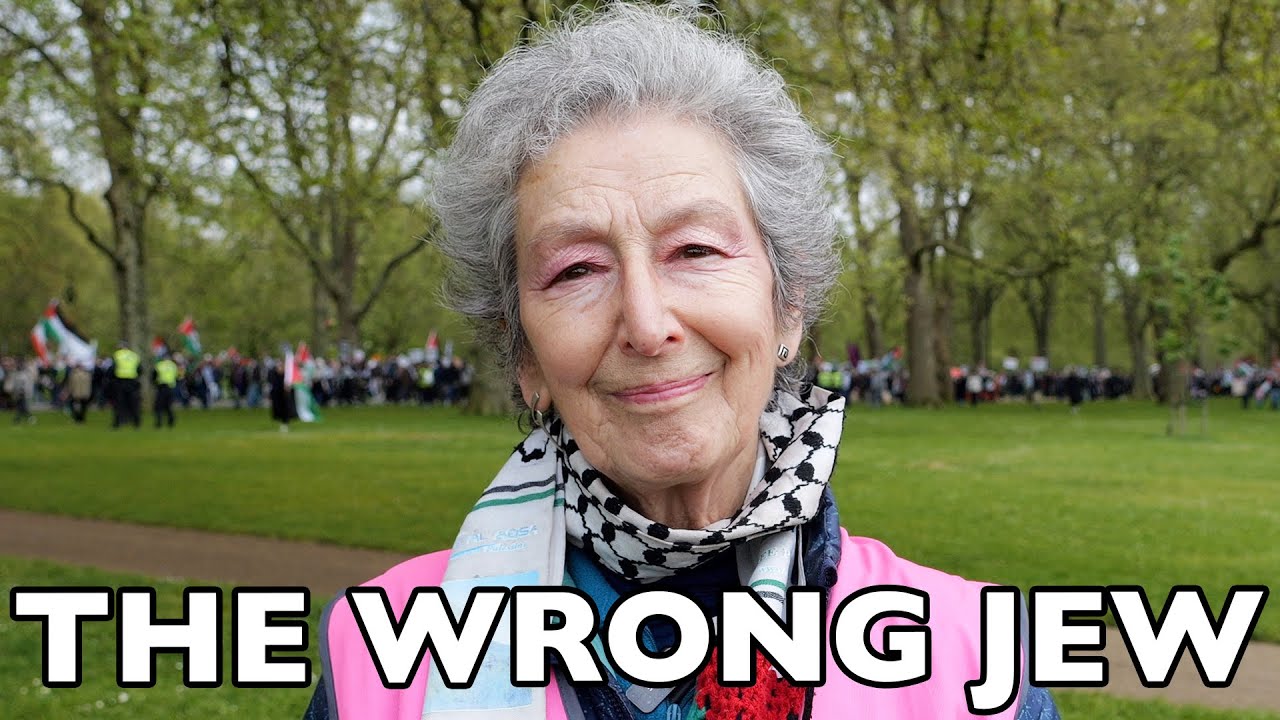Sidebar
Jewish Community of Lemmygrad
Judaism is unique among Abrahamic faiths in that while sometimes conversions are permissible, most Jews discourage them anyway since Judaism has high standards for conversion. You cannot simply get baptized in a mikveh or fall to your knees and accept Moses as your Savior in order to become a *giyoret* or *ger*. It can take months or even years of studying and training before a Rabbi can certify you. Contrary to popular misconception, being one of the Chosen People is a **responsibility**, not a privilege. If you did some research, thought about it, and remain **certain** about converting anyway, then you may be able to find a [synagogue](https://northboot.xyz/search?q=find+a+synagogue&language=all) nearby that can assist you with this, or perhaps a [Rabbi](https://northboot.xyz/search?q=find+a+rabbi&language=all) who can. Whatever the case may be, we cannot assist you with conversion; this is not the best place for getting started.
 truthout.org
truthout.org
>Simply put, I wore the shirt to honor my Jewish ancestors. They escaped antisemitic hatred in Eastern Europe and became involved in leftist anti-racist and anti-capitalist activism in the United States. My maternal grandparents were involved in the Civil Rights Movement and the anti-poverty movement of the mid-twentieth century. In addition, my father was a documentary filmmaker who told the story of the [Weather Underground](https://itvs.org/films/weather-underground) and [Muhammad Ali’s exile years](https://www.pbs.org/independentlens/documentaries/trials-of-muhammad-ali). My mom is a licensed clinical therapist who tremendously improves the mental health of her patients every single day. > >This solidarity work, more broadly, is the Jewish-American [historical legacy](https://digitalcommons.macalester.edu/tapestries/vol13/iss1/13) — aligning Jewish values with the fight to liberate all oppressed groups, supporting mutual emancipation from systems of social, political and economic domination that elevate a few individuals at the expense of the collective — *that* is who we are. > >I believe this Jewish-American historical legacy is entirely consistent with anti-Zionism. I can say with absolute certainty that my immigrant ancestors would have deplored the idea of murdering (as of July 9, 2024) at least [38,764 Palestinian people](https://www.aljazeera.com/news/longform/2023/10/9/israel-hamas-war-in-maps-and-charts-live-tracker) (and possibly more than 186,000, according to the [*Lancet* medical journal](https://www.democracynow.org/2024/7/8/headlines/the_lancet_gazas_true_death_toll_could_be_186_000_or_higher)) for the purpose of supposedly protecting Jewish safety. > >[…] > >About one hour after the plane departed, I decided to re-display my “Jews Say Ceasefire Now” shirt. (At this point, the lights were dimmed and it was much more difficult for anyone to even see the shirt’s text). After about 20 minutes, the purser and another flight attendant returned and again demanded that I cover up. I told them to stop policing how I publicly expressed my Jewish identity. They then threatened to land the plane on a tarmac and kick me off the flight unless I permanently covered up the shirt. I reluctantly obliged their demands. > >About 10 to 15 minutes later, the purser returned, handed me a sheet of paper with the headline “Notice of U.S. Federal Regulation Violation” and told me, “The captain wanted you to read this.” They warned me that if I displayed my “Jews Say Ceasefire Now” shirt again, they would hand me over to the police once the plane landed. They repeated this message over and over again. I stated that I heard them nearly five times before they finally left my seat. The purser’s last remark before she left was, “Our intention was for you to have a good flight.”
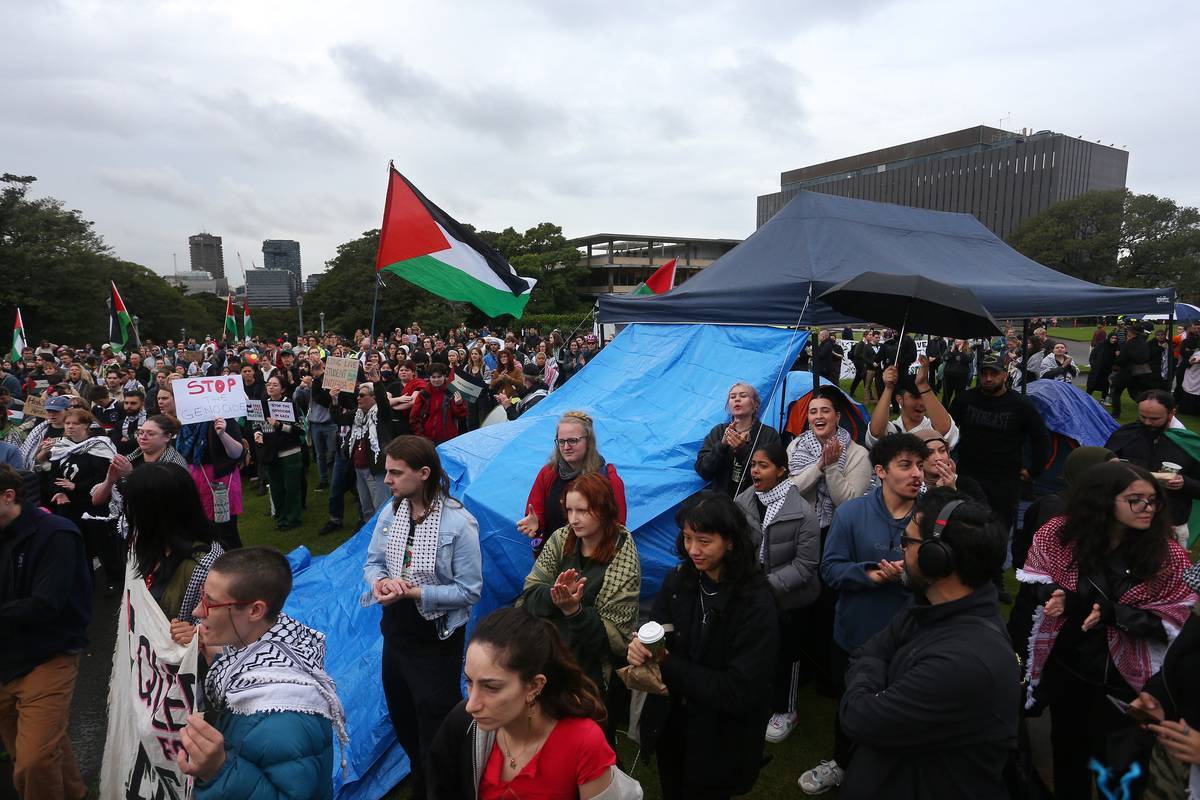 www.middleeastmonitor.com
www.middleeastmonitor.com
>Sarah Schwartz, an executive officer of the Council, praised the students for speaking out against what she described as an “unfolding genocide”. > >She called for the immediate withdrawal of the misconduct notices and urged transparency in university partnerships with the defence and security sectors, as the University of Sydney has recently done. > >Max Kaiser, another executive officer, acknowledged that protests can disrupt university life but insisted that punishing students for exercising their democratic rights is unjust. Protests are a reality of life in a democracy, Kaiser stressed. > >Several universities, including Deakin University, University of Melbourne, Monash University and La Trobe University, have issued “general misconduct” notices to pro-Palestinian students for protesting [neocolonialism’s] “genocidal war” in Gaza. > >These actions faced backlash and raised questions about the universities’ commitment to combating racism and Islamophobia on campus.
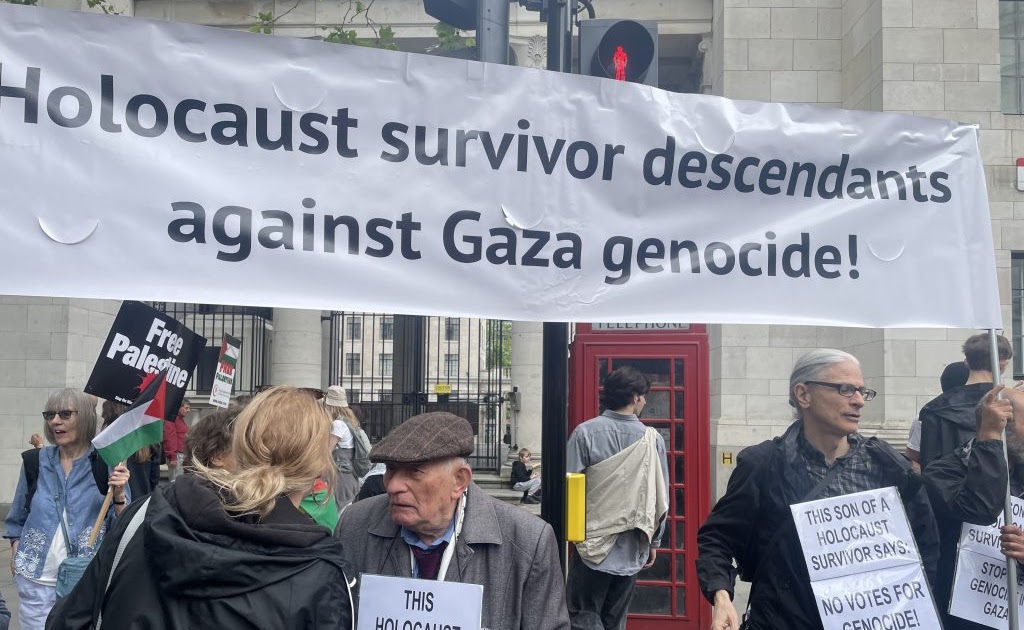 azvsas.blogspot.com
azvsas.blogspot.com
>Ten holocaust survivors have just published [a letter](https://mondoweiss.net/?p=299772) in 'Mondoweiss', condemning Genocide in Gaza. It was originally sent to the *Guardian*, *Independent* and *New York Times*. Not surprisingly these ‘liberal’ outlets weren’t interested in anything which strays from the accepted Zionist narrative which says that the only lesson of the Holocaust is that [a neocolony] has the ‘right to exist’ as a Jewish Supremacist state and the ‘right to self-defence’ i.e. commit genocide’ against the Palestinians. > >Stephen Kapos, who has led the protest of holocaust survivors in London, was supposed to be interviewed by the Guardian but three times it cancelled the appointment. Clearly he and the other signatories are the *Wrong Type Of Holocaust Survivor*. > >Stephen and his comrades draw the lesson that racism is wrong whoever the perpetrator is and whoever the victims are, whereas U.S. [neo]imperialism and its [neocolony] conclude that [Herzlian] racism is justified by the Holocaust.
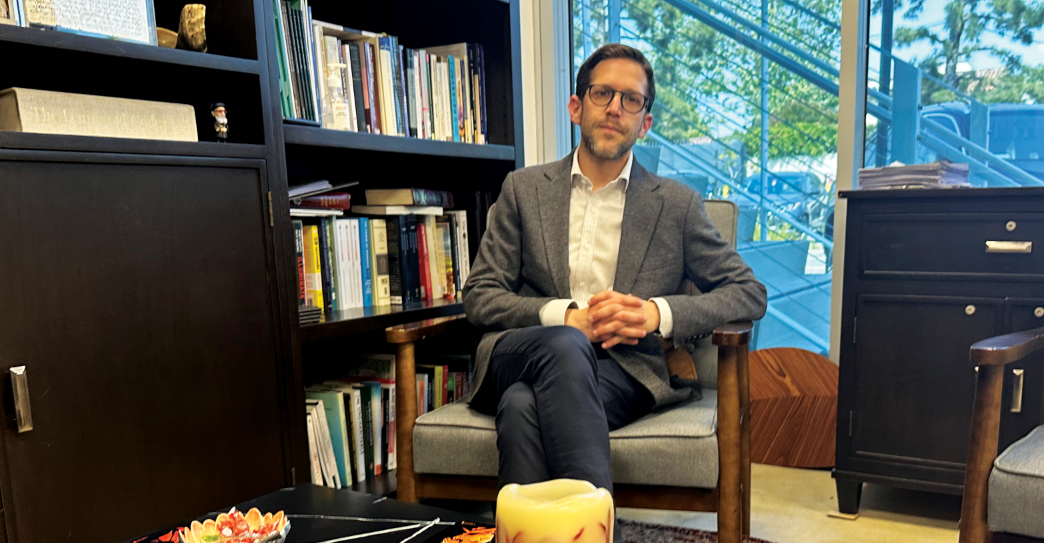 fair.org
fair.org
>The administration’s justification for the censorship was twofold. The first reason for the censorship was that the pro-Palestine viewpoints were simply too hurtful for a community that was still in shock over the October 7 attacks against [neocolonialism] by Hamas. > >This is, to be quite blunt, demeaning to the students and the community. I was not much older than these students during the 9/11 attacks, but I spent that day and days after that at my student newspaper, the **Michigan Daily**. While our reporters piled into a car to drive to New York City, I joined my fellow editorial board members—Jews, Arabs and many others—in navigating a future of war, attacks on civil liberties and anti-Islamic hate. > >And today, student journalists are no less important in this historical moment where students are standing up against the genocide in Gaza (**USA Today**, [5/2/24](https://www.usatoday.com/story/news/nation/2024/05/02/columbia-encampment-arrests-broadcast-by-student-radio-station/73539782007); **AP**, [5/2/24](https://apnews.com/article/campus-protests-student-journalists-b9ff00a494cdb69d45bd1f99db28288b)). > >The **Boiling Point** is hardly pro-Hamas. As one of its editors, Tali Liebenthal, said in response to this point, it was indeed painful for the community to hear anti-[Zionist] opinions, but “I don’t think that the **Boiling Point** has any responsibility to shield our readers from that pain.” The Shalhevet students, in the tradition of Jewish inquiry, do certainly appear able to explore the tough and difficult subjects of their moment. > >But there’s a second, more banal reason for the censorship. Block told the **Boiling Point**, “My feeling is that this article would both give people the wrong impression about Shalhevet.” He added: >>It would have very serious implications for whether they’re going to consider sending the next generation of people who should be Shalhevet students to Shalhevet. > >Block is placing prospective parents’ sensitivities before truth and debate. He’s worried that families will see a quote in the paper they disagree with, decide the school is a Hamas hot house, and send their child for an education elsewhere. The suggestion is that the school’s enrollment numbers are more important, not just than freedom of the press, but than a central aspect of Jewishness: the pursuit of knowledge. (Emphasis original.)
>First, all cemeteries are located outside the medieval city,⁴² usually near one of the main city gates.⁴³ Unlike Christian cemeteries, these burial spaces were never located in the immediate vicinity of the synagogue. This point is clearly influenced by the Jewish laws which consider the corpse as impure and oblige the faithful to place the cemetery far from the places of worship. > >One of the constants in the organisation of burials in Jewish cemeteries is the avoidance of overlaps between ancient graves, in keeping with Jewish laws⁴⁴ that forbid the disturbance of ancient graves.⁴⁵ To comply with these prescriptions, the communities used various means. The first was setting up markings for the graves. This may have taken different forms — on the surface of the ground or even inside the fill. > >The most common way was to indicate the location by a marker above the fill (in wood or stone). Those made of stone (sold after the expulsions) were erected (stele) in Ashkenazi cemeteries or placed on the ground (slab) in Sephardic cemeteries (like the one found in Barcelona). They must have been inscribed in order to facilitate the identification of the deceased. > >The location of the graves could also have been marked by the installation of an apparent surface demarcation (perimeter of the grave as in Toledo) (Fig. 22) or by the installation of a pavement around the periphery of the grave (Seville). The gravedigger could, finally, be helped by the covering stones of anthropomorphic tombs (Tarrega, Barcelona, Lucena and Toledo) or the brick *lucillo* vaults. > >At the same time, marking could be internal, with arrangements in the filling of the grave as the filtration of sediment (Toledo), the deposit of large blocks of stone or horizontal tegulae (Lucena). All these devices have contributed to the preservation of ancient graves. Though cases of overlap are known, they remain relatively rare compared to those of the Christians⁴⁶ and only very exceptionally disturbed the bones. > >The second way to avoid disturbing ancient tombs is through extremely rigorous management of space. This is reflected in a more or less strict organisation in rows (Châteauroux, York, Basel, Rome, Bologna, Toledo, Seville), suggesting an optimisation of the available space (evident in Châteauroux, where there is little space between the graves). At Lucena, les tombes paraissent désorganisées [the tombs seem disorganized]. The Winchester site has both types of organisation, rows and groups, but this seems to be more in response to considerations related to the age of the individuals⁴⁷. > >This optimisation of space can also be seen at Basel, where the youngest individuals were deposited between the adult graves. Cases of superimposition or overlapping are recognised (Barcelona, Seville) and are made possible by natural (floods) or anthropic (embankments) contributions of sediment. > >Family ties are suspected for some individuals, on several sites, and take the form either of enclosures (Toledo), or of a rapprochement of graves highlighted by DNA results, as at Châteauroux. Also, the management of burials may be influenced by age or sex criteria, as at Châteauroux, York or Winchester. However, the sometimes limited samples of graves (Barcelona 2001), the absence of anthropological studies (Toledo 2009) or the use of old methods (Barcelona) or even outdated methods (York) as well as the poor conservation of bones (Lucena) considerably limit this assessment of cemetery management. > >The modes of burial appear to be diversified, but this must be qualified with criteria of chronology and space. Those presented here were used from the 10/11th century (Lucena) to the 15/16th century (Rome and Bologna). This long period of time may have influenced burial patterns and make comparisons more complex. Thus, while all the sites mention the use of coffins, the Lucena site did not yield any. This absence is perhaps linked to the early age of the site. In the same way, distances and cultural areas may have had an impact on burial practices. > >The modes of burial seem less diversified in countries outside of Spain. Indeed, if the use of wooden coffins nailed in simple pits appears to be in the majority on many sites (York, Basel, Winchester, Rome, and Bologna), other modes (anthropomorphic pits, tombs with side cavities, masonry tombs) are present in large numbers on the Iberian Peninsula. The use of stretchers is recognised at the sites of Tárrega and Châteauroux, but could be more important. It is indeed difficult to identify such a device once decomposed, especially if it was deposited on the pit floor. > >Stretchers composed of several wooden elements assembled with nails could easily be mistaken for coffins. These modes of burial are not unique to Jewish communities, since they are shared by Christians as with coffins⁴⁸ or anthropomorphic tombs⁴⁹ (Fig. 23). Some types, such as side‐cavity tombs, even seem to be borrowed from the Muslims of Spain.⁵⁰ It should be noted, however, that the latter type is not found elsewhere in Europe at the same period. Only the use of the *lucillo* could be exclusive to Jewish communities, as Arturo Ruiz Taboada assumes.⁵¹ > >Overall, the positions and orientations of the bodies seem relatively uniform. We observe that the deceased are almost always lying on their backs with their limbs extended and their heads facing west. Slight variations exist (York). On the other hand, the position of the hands crossed on the abdomen or on the thorax (high position) is one of the best criteria for identifying a non‐Jewish tomb.⁵² Indeed, archaeological observations in Jewish burial spaces reveal that the extremities of the upper limbs are almost exclusively in the down position. > >In this respect, individuals in Jewish cemeteries are very clearly distinguished from Christians. According to a mandate issued in 1482 by Queen Isabella, placing the hands along the body would be a typically Hebrew practice, since she asked the Inquisition to search for cemeteries of converts where communities applied a funeral ritual with ‘...arms extended and not placed in a cross...’.⁵³
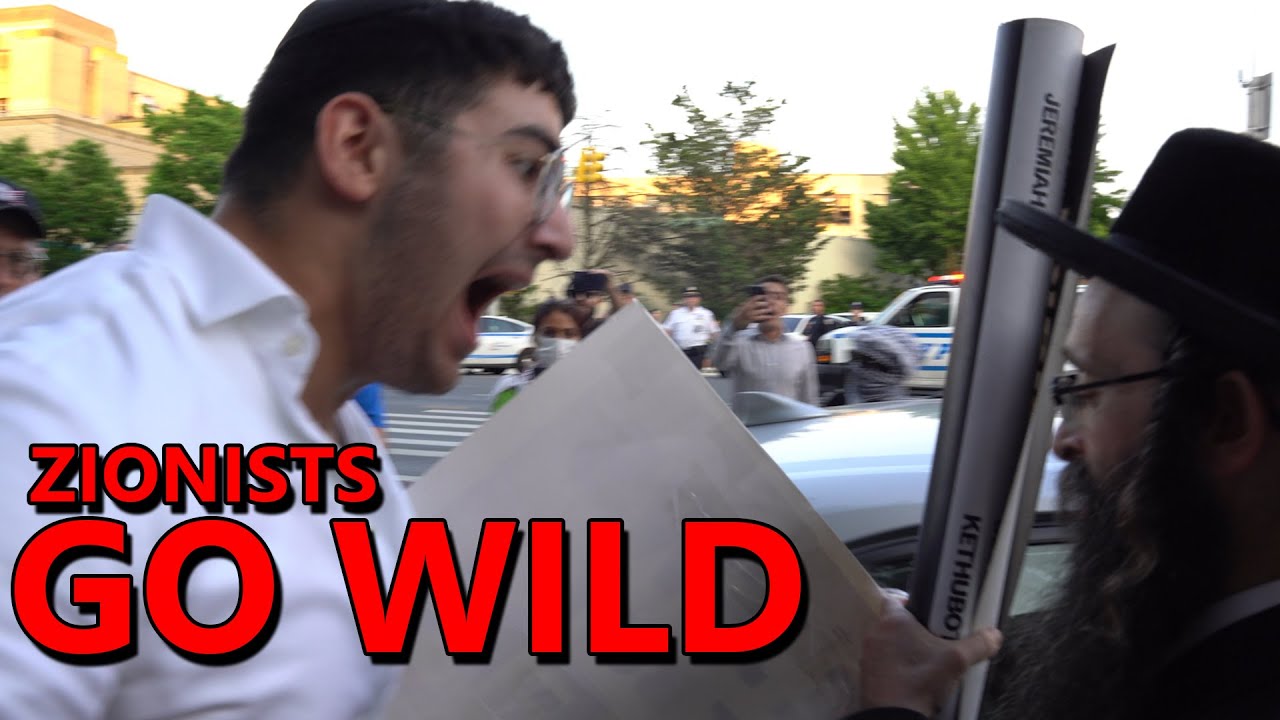 inv.tux.pizza
inv.tux.pizza
Herzlians’ immaturity still astounds me.
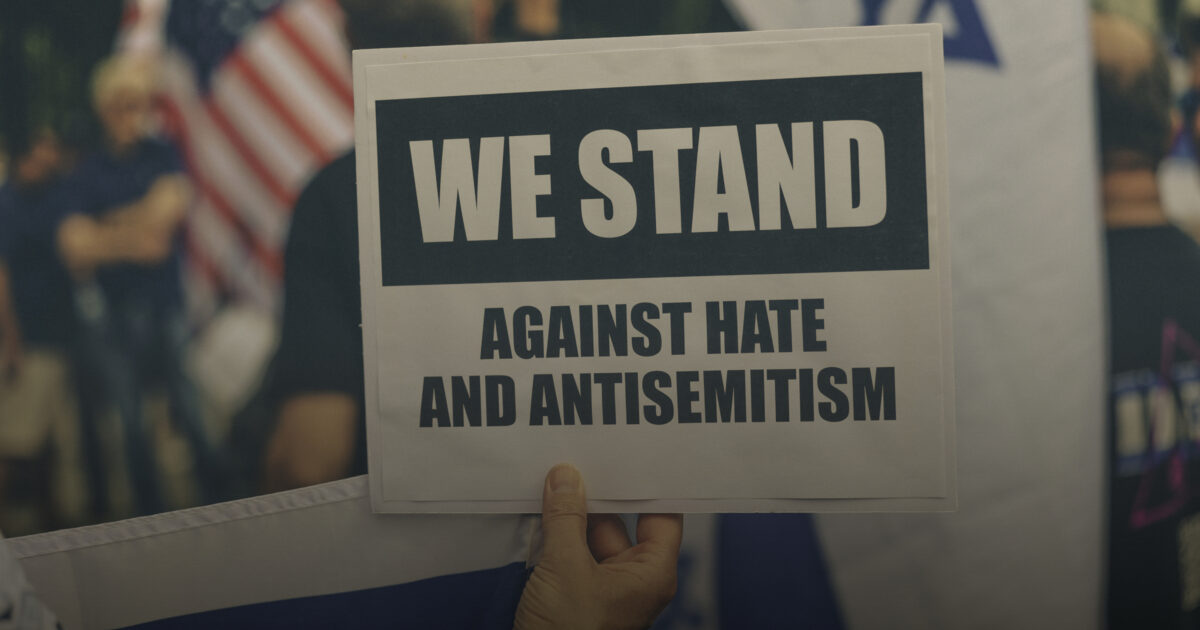 jewishcurrents.org
jewishcurrents.org
>**AFTER COMBING THROUGH THE ADL’S DATA,** it became clear to us that this reassessment couldn’t provide a clear picture of American antisemitism in 2023, because the audit does not sufficiently differentiate by degree and often does not share enough information to determine whether incidents are clearly antisemitic. Still, our analysis yielded some helpful takeaways. > >After our reassessment, the ADL’s data still [shows](https://archive.is/mR59l) that organized white nationalism was responsible for more incidents in 2023 than every year since 2017, and that there is a clear correlation between antisemitism and anti-LGBTQ organizing (we found that over 350 incidents of the 813 coded as “anti-LGBTQ” last year were also coded as antisemitic or associated with white nationalist groups). > >It also shows that some people do wrap antisemitic views in the language of Palestine solidarity—for example, on November 22nd a man yelled “Free Palestine” while throwing a rock at an Orthodox Jewish man in Williamsburg, a type of encounter that shows up occasionally in the data—but that very few of the verifiably antisemitic items tracked actually took place at rallies and events organized by prominent Palestine advocacy groups. > >Far more frequently, anti-Zionist rhetoric that was also antisemitic appeared at actions by white nationalist groups: For example, on October 28th, the far-right [National Justice Party (NJP)](https://archive.is/lvPsR) held a rally that featured signs with slogans such as “No More Jewish Wars.” > >On the whole, when we examined the unambiguous cases of antisemitism, we found that the most frequently identified sources—noted in nearly 1,200 incidents—were groups that are part of the white nationalist movement, such as the NJP, Patriot Front, the Goyim Defense League (GDL), Blood Tribe, and White Lives Matter. > >However, the more time we spent with the ADL’s antisemitism audit, the clearer it became that the dataset itself is severely structurally limited—and may significantly *undercount* right-wing antisemitic incidents. One fundamental problem is the way that the audit’s data is separated from other categories on the H.E.A.T. Map: White nationalist incidents that don’t explicitly name Jews are tracked as White Supremacist Propaganda or White Supremacist Events but not as Antisemitic Incidents, leaving them out of the audit. > >There’s a strong case to be made that all such incidents should also be included in the audit, even if they do not include explicit antisemitism. (Our cursory survey of those other datasets did turn up explicitly antisemitic incidents that should have appeared in the audit based on the current methodology, like an instance of Patriot Front passing out flyers with the Nazi slogan “blood and soil” and references to antisemitic websites, as well as a handful of overtly anti-Jewish events hosted by the virulently antisemitic GDL.) > >As activist Erik K. Ward has [argued](https://archive.is/iqQLW), antisemitism is not just a feature but the “theoretical core” of modern American white nationalism; advancement of their cause is necessarily the advancement of an ideologically committed, antisemitic political project. If we added the additional White Supremacist Propaganda and White Supremacist Events entries that were not originally included in the antisemitism audit to the ADL’s overall count, it would bring the total number of antisemitic incidents to 15,564. > >Since we found that most alleged antisemitic incidents in the Palestine solidarity movement lacked merit, the legitimately antisemitic Palestine-related incidents would appear as mere statistical noise when compared with the stunning growth of organized white nationalism. > >But even this radical revision of the ADL’s methodology wouldn’t address the basic constraints of measuring American antisemitism through a straightforward tally of individual incidents. By failing to weigh incidents according to reach and impact, and mostly ignoring structural or political factors, the audit erases the difference in significance between random, uncoordinated incidents and those tied to a public movement to spread antisemitism. > >White nationalist leader Nick Fuentes, known for his [admiration of Adolf Hitler](https://archive.is/OA9MZ) and his antisemitic rants against “[Talmudic Jews](https://archive.is/5CVtC),” is today one of the most influential far-right leaders in the country, with over 300,000 followers on X. Nevertheless, Fuentes’s name appears only once in the antisemitism audit. The ADL’s data is much more poised to capture random swastika graffiti and stray anti-Zionist comments than dangerous Christian nationalist movements like Fuentes’s “Groypers,” and is thus unable to connect individual experiences of antisemitism with the larger systemic forces perpetuating these ideas. > >Ultimately, this haphazard approach—as well as the mode of data collection, which favors certain kinds of incidents and does nothing to ensure that it produces a representative sample—renders the audit unable to speak meaningfully to the prevalence or impact of antisemitism in the U.S. It remains an open question whether a sufficiently sophisticated methodology might produce a more reliable picture, and thus aid the task of combating antisemitism. But it is abundantly clear that the ADL’s audit and its uncritical representation in the media do not serve those aims. (Emphasis original.)
Quoting Paul Hanebrink’s [*A Specter Haunting Europe: The Myth of Judeo‐Bolshevism*](https://libgen.rs/book/index.php?md5=62AC3D752ECB869E1E971BE529C9DA5F), pages 58–9: >Rumors of armed Jewish collaboration with the Bolsheviks fueled violence against Jews in other places where Polish forces clashed with the Red Army. A few weeks later, Polish troops fought a pitched battle in Lida, some 250 kilometers north of Pinsk. On their first foray into the town, **Polish troops searched the synagogue and the Jewish hospital for insurgents. After a brief reversal, they entered the town again, this time amid rumors that Jews had shot at Polish troops from windows and had even mutilated the bodies of dead Poles.** > >**Enraged Polish soldiers looted Jewish shops and homes, arrested dozens of Jews on suspicion of collaboration with the enemy, and then impressed local Jews into forced labor. Thirty‐eight Jews were killed. Similar accusations accompanied the Polish soldiers’ entry into the city of Vilnius** (Polish: Wilno; Yiddish: Vilna). > >According to a report compiled by the local Jewish Committee and presented to Polish authorities, **Jewish victims of reprisals were identified as Bolsheviks by strangers, sometimes even by children, according to their physical appearance. At least sixty Jews were killed.** > >The authors of the report noted that Polish forces made little effort to learn much about what Jews had done or not done under Bolshevik rule before they imprisoned them. The fate of Leib Jaffe, poet and president of the Lithuanian Zionist Association, was typical. Polish authorities held him in prison on suspicion of being a Bolshevik sympathizer even though his newspaper had been suppressed by the Bolsheviks as counterrevolutionary propaganda.¹⁶ > >These attacks on Jewish civilians reflected the persistence of violence in a region where the First World War evolved into a series of interlocking regional wars that unfolded against the backdrop of revolution. As the war evolved, so too did wartime fears about Jewish spies and saboteurs. These were reframed and linked to a new threat: the Jewish partisan. > >**Elusive enemies, partisans (or *francs‐tireurs*) were imagined in military cultures across Europe as savage warriors who attacked their victims without any consideration for the rules of civilized warfare.¹⁷ They were generally understood to be cowards who attacked from behind and then hid among civilians. They were even thought to recruit women and children to fight for them, further blurring the lines between combatants and innocents. Obsessions like these made partisans into enemies whose treachery justified both harsh repression and preventive action.** > >As war in Eastern Europe was replaced by a state of revolution and civil war, fears of partisan treachery often fixed on the supposed menace of Jews believed to be taking up arms on behalf of their Soviet masters. (Emphasis added.)
In neoliberal historiography, the recommended approach to discussing Jews in the people’s republics is to portray them as passive objects with almost no [agency](https://lemmygrad.ml/post/1132778) whatsoever, apart from fleeing towards occupied Palestine or some other Western utopia. Things simply happen to them: they become pangender damsels in distress who can do nothing other than (attempt to) escape to “Israel” the microsecond that the opportunity becomes available, where they’ll presumably live happily ever after just like in a fairy tale. Although it may be a lousy idea for a general web search, looking up “Jewish communists” on a search engine dedicated to peer‐reviewed journals can provide some useful results, because the very concept clashes with the anticommunist objectification of Jewish people. This work by Pól Ó Dochartaigh, though still fairly liberal, gives us a sorely needed look at the complexity of one people’s republic’s relationship with Jews: >Helmut Eschwege was born in Hannover in 1913 into an Orthodox Jewish family and was schooled in a Talmud Torah school in Hamburg, though at an early age he rejected religion in favour of socialism. In 1929 he joined the SPD and the Reichsbanner Schwarz‐Rot‐Gold, a paramilitary organisation for the defence of democracy in the Weimar Republic. He remained a member until both were banned after the [Third Reich] came to power in 1933.¹ > >In 1934 Eschwege emigrated via Denmark to Estonia and in 1937 to Palestine, where he joined the Communist Party of Palestine, and from 1942 he served in the British Army. **As a Jewish communist Eschwege rejected Zionism and was highly critical of Jewish settler attitudes to Arabs. He made no secret of his desire to leave Palestine.²** > >In 1946 Eschwege returned to Germany via Prague and Karlsbad (Karlovy Vary). He joined the SED and, through contacts, played a significant part in transferring Jewish book collections from Prague to Dresden, books which in 1952 were acquired by the GDR’s *Museum für Deutsche Geschichte* in Berlin, and Eschwege moved to work there, while he remained living in Dresden. > >Though trained as a ‘Kaufmann’, Eschwege became a historian of Jewish and German–Jewish themes. The GDR authorities made his research difficult, however; in 1953 he resigned his post in the museum before he could be dismissed, and in 1958 he was expelled from the SED. Nevertheless, **he built up a significant international reputation as an historian, and was involved in Christian–Jewish dialogue in the GDR.** He died in 1992 in Dresden, having been a founding member of the East German Social Democratic Party in early 1990. > >[…] > >That a whole series of German–Jewish political exiles returned to Germany after 1945 and went to the Soviet Zone has been well documented.²¹ Some are better known than others, especially those who held high political office such as Albert Norden, Alexander Abusch, Hermann Axen, though even they were subjected to suspicion and temporary demotions in the early 1950s. One lesser‐known figure whose biography is similar to that of Abusch, because he was in exile in both France and Mexico, is Erich Jungmann. > >Jungmann (1907–86) was born into a working‐class Jewish family in Reichenberg, Saxony. He joined the KPD in 1928, was elected to the Reichstag in November 1932, arrested by the [anticommunists] in 1933 and emigrated in 1934 to the Soviet Union. He was active in communist circles in Amsterdam (1935–37) and Paris (1937–39), interned in Vichy (1939–42) and fled to Mexico (1942–46). He returned to Germany and, after a brief sojourn in Frankfurt/Oder was sent to the British Zone as a KPD functionary. > >Recalled to the GDR in 1951 he was caught up in the charges that derived from the Slanský Trial in Czechoslovakia (Fieldism, Titoism, Trotskyism) but, after a brief period in internal exile in Karl‐Marx‐Stadt returned to Berlin, rose through the ranks and was secretly rehabilitated in 1956. **He served as Secretary of the KPD Central Committee, and retired in 1976 after almost five years as Director of Radio Berlin International.²²** > >According to archival material found by Wolffsohn’s team of researchers, Jungmann secured his own safety by incriminating Alexander Abusch, among others.²³ Jungmann’s Jewishness was almost incidental in his own life, yet clearly not to the SED in the early 1950s. This communist who had been subjected to discrimination on account of his Jewish origins could have left the GDR at any time after 1954 until 1961. Yet he didn’t. His communist convictions apparently sat too deep. > >Not all stayed, however. Leo Zuckermann (1908–85) was born into a Jewish family in Lublin and brought up in Wuppertal. He joined the SPD in 1927 and switched to the KPD in 1928. He trained as a lawyer, was an active communist, and served in the political leadership of the Jewish Workers’ Cultural Association in Wuppertal. He went to France in 1933, was interned in 1939 but fled to Mexico in 1941, via Marseille. In exile he was, on the instructions of the KPD, a member of the German–Jewish refugee organisation Menorah.²⁴ > >He returned to Germany in 1947 and joined both the SED and the Berlin Jewish Community. By 1950 this had become politically untenable, not least because he had risen to become the Chief of Wilhelm Pieck’s Office. He was assigned other senior duties until, in December 1952 in the wake of the Slanský Trial in Prague, he fled the GDR and settled once again in Mexico, where he worked as a jurist and academic. > >According to his son **he did not consider moving to [occupied Palestine] partly because of his wife’s security fears but also because of his ‘disapproval of the treatment of the Arab population as second‐class citizens’.²⁵ Zuckermann remained a communist and died in Mexico in 1985. In 1981 he had had a friendly meeting with Honecker in the GDR embassy in Mexico City.** Zuckermann’s Jewishness was too important to him to tolerate the GDR’s antisemitism, yet **he somehow retained friendly feelings toward the GDR thirty years after he fled.** > >Many of the Jewish writers who went to the GDR after 1945 have been considered extensively elsewhere. Most of them wrote about Jewish themes at least some of the time, though with varying degrees of openness. Anna Seghers’ first post‐war novel, *Die Toten bleiben jung*,²⁶ though it puts antisemitic sentiments into the mouths of several negative characters, is not a novel on a Jewish theme, unlike some of her short stories, such as ‘Post ins Gelobte Land’, published in 1946.²⁷ > >It is not coincidental that the latter story was written in Mexiko, i.e. before Seghers return to Germany in 1947 and, though it was not included in a GDR *Werkausgabe* of 1951–53,²⁸ it certainly appeared in other short story collections.²⁹ Her 1924 PhD thesis on Jews in the works of Rembrandt was not published until 1981, just two years before her death.³⁰ Throughout her time in the GDR Seghers did not foreground Jewish themes in her writing. > >**She served as President of the GDR Writers’ Union 1952–78** and rarely criticised the GDR publicly, not even when her publisher, Walter Janka, was put on trial in 1957, even though her international fame as a writer may have allowed her more freedoms than were accorded many others. Indeed, according to Janka Seghers implicated ‘mit dubiosen Aussagen’ Paul Merker as a ‘Noel Field‐Agent’ in 1951.³¹ > >[…] > >All of those considered thus far were adults and activists before the [Third Reich’s] assumption of power in 1933, and there are more, who similarly chose varying political paths in the GDR. They include the entirely conformist political propagandist and lawyer, Friedrich Karl Kaul, who had become active in oppositional circles in 1933 and had been in exile in Colombia, Nicaragua and the USA. **After his return he made it his life’s work to link [Fascism] and antisemitism to post‐war western society and was a joint plaintiff in the Frankfurt Auschwitz Trials of 1963–66.³⁶** > >Rudolf Hirsch joined the KPD in 1931 and left Germany in 1938 for Palestine via Sweden. In Palestine he collaborated with Arnold Zweig. After his return to Germany in 1949 he became a court reporter. **In the 1980s he published a novel about the Zionist bombing of a refugee ship, the Patria, which cost 250 Jewish refugees their lives in Haifa in 1940.³⁷ Together with his wife, Rosemarie Schuder, he also published an extensive study of antisemitism, for which they were awarded *Nationalpreis der DDR* in 1988.³⁸** Politically, he was not active. (Emphasis added.) As we can see, despite the author’s explicit recognition of Jewish agency, even he could not resist slipping in anticommunist tedium like ‘the evils of Stalinism’ and ‘the GDR’s antisemitism’. I can’t tell if this ritual is either an ideologic force of habit or a conscious decision made to appease publishers, but it comes across as artificial and suspiciously incongruous from somebody who is trying to write history maturely. In any case, this is an acceptable starting point for learning about Jews in the German Democratic Republic.
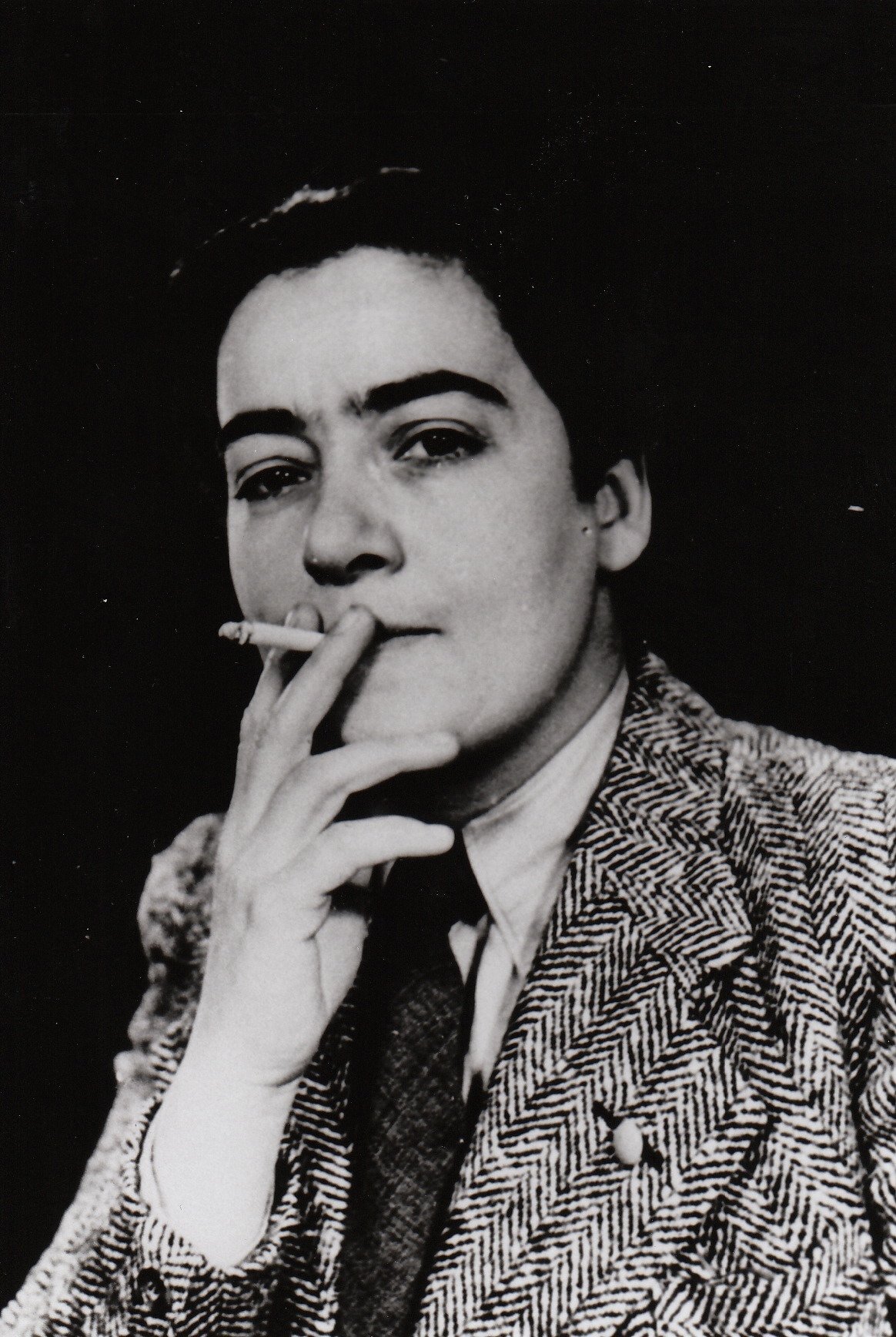 letherfly.org
letherfly.org
>Her musical career was cut short when the [Fascists] invaded the Netherlands. > >Belinfante’s position as a famous musician gave her some protection, and she chose not to escape to a safe harbor. Instead, she decided to join the Dutch resistance. > >She joined Willem Arondeus, who himself was an out and proud gay person. They focused on forging documents to smuggle Jews out of the Netherlands. > >Sadly, Arondeus didn’t survive the war, but after his death he was declared a Righteous Gentile by Yad VaShem. > >The [Axis’s] suspicion was aroused in 1943, and the noose began to tighten around the unit member’s necks. > >Frieda came up with a genius plan to prevent the [Axis] from discovering which documents were forged: blowing up the [Axis] population registry office in Amsterdam. > >She planned the mission, but as a woman she wasn’t allowed to join the executive squad. > >The operation was declared a partial success and the explosion led to the destruction of 800,000 Jewish IDs (15% of those kept there).
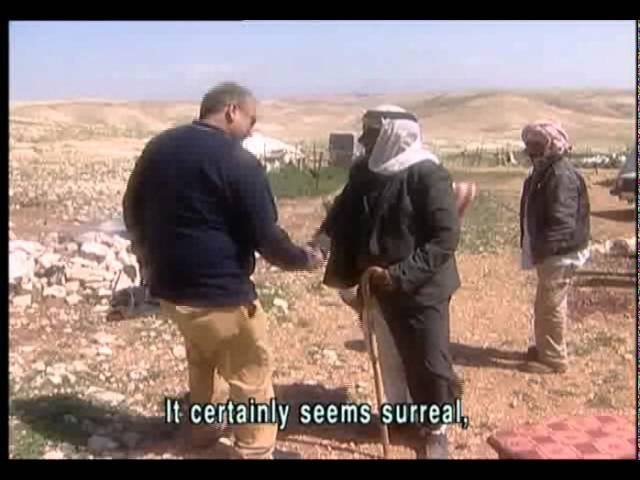 inv.tux.pizza
inv.tux.pizza
>The accepted assumption is that after the destruction of the Second Temple and the defeat of Bar Kochva, the Land of Israel was emptied of Jews. >>When an empire takes over a country, it exiles the élite and leaves the lower classes, and that is what happened after the destruction of both the First Temple and the Second Temple. > >[…] > >It becomes clear that [a significant part of the Arabs [*sic*] in the Land of Israel are actually descendants of Jews](https://lemmygrad.ml/post/2992159) who were forced to convert to Islam over the centuries. There are studies which indicate that 85 percent of this group is of Jewish origin. Some claim that the percentage is less. > >[…] > >In the Taʻamra tribe territory, there is an ancient Muslim cemetery. Jews who were forced to convert may also be buried here. Some of the graves have a small, sooty niche which testify to the Jewish custom of lighting candles for the souls of the deceased. And if the war on Gaza were a movie (which unfortunately it is not), this would be the ‘big reveal’ near the end: >To demonstrate how wide the findings are going into the depth Palestinian society we mention here that **almost the entire high‐level politicians of the PLO, as well and the majority of Hamas leaders, are of a Jewish origin. This includes Mahmud Abbas (Abu Mazen — a descendant of a family of Rabbis), the late Dr. Saʻeb Erikat, Jibril Rajub (Argov), Maruwan Barguti, Nabil Shaʻat, Khanan Ashrawi, from the Fatah movement, […] Khanin Zuabi, and late sheikh Akhmad Yassin, Ismail Haniʻya, Dr. Mussa Abu Marzuk, Muhammed Def, Dr. Aziz Duwek (a Cohen), and above all Yikhyeh Sinuar from Hamas.** (Emphasis added. [Source.](https://the-engagement.org/?page_id=16))
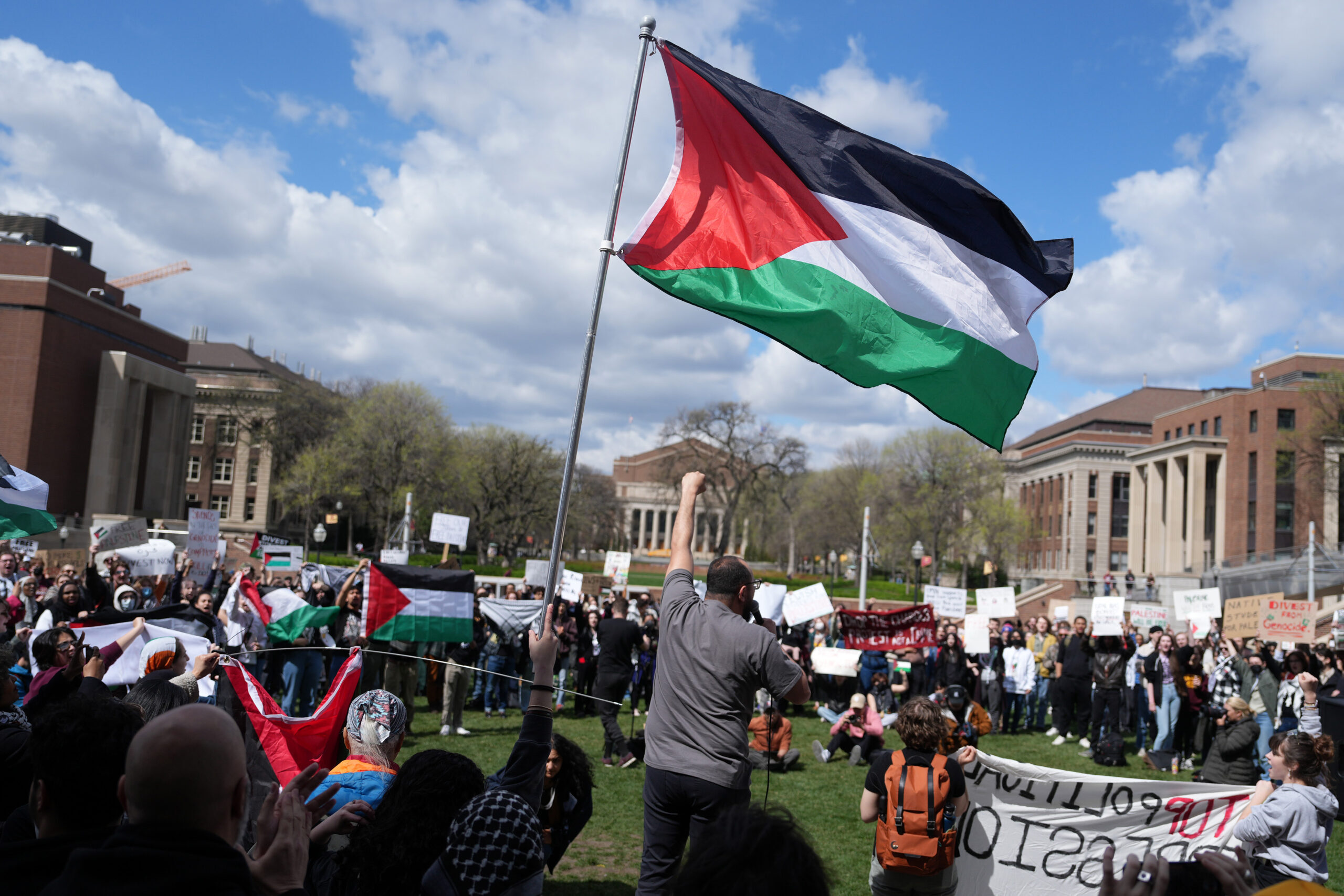 jewishinsider.com
jewishinsider.com
([Mirror.](https://archive.is/pLeDZ)) >“The assault on Gaza can also be understood in other terms: as a textbook case of genocide unfolding in front of our eyes,” Raz Segal, [a Jewish] associate professor of Holocaust and Genocide Studies at Stockton University in New Jersey, wrote in the *Jewish Currents* on Oct. 13. “I say this as a scholar of genocide, who has spent many years writing about [the] mass violence against Palestinians,” he wrote. > >A spokesperson for the University of Minnesota told JI that the director selection process was put on hold “to allow an opportunity to determine next steps.” > >“Members of the university community have come forward to express their interest in providing perspective on the hiring of the position of Director of the Center for Holocaust and Genocide Studies,” the spokesperson said. “Because of the community-facing and leadership role the director holds, it is important that these voices are heard.” > >Segal, who was selected as the center’s new director by Ann Waltner, the interim dean of the College of Liberal Arts at University of Minnesota, also co-authored an Al-Jazeera [article](https://www.aljazeera.com/opinions/2024/1/14/intent-in-the-genocide-case-against-israel-is-not-hard-to-prove) in January, in which he called [Zionism’s régime] a “settler-colonial” power. Last month, Segal [downplayed](https://www.njspotlightnews.org/2024/05/qa-professor-raz-segal-holocaust-genocide-studies-stockton-university-student-pro-palestinian-protests-encampments) the […] anti-[Zionist] encampments that have engulfed campuses nationwide—many of which have [turned violent](https://jewishinsider.com/2024/05/jewish-leaders-leaders-worry-that-university-leaders-are-appeasing-anti-israel-protesters-at-any-cost/%23:~:text=Rotenberg,%20who%20was%20general%20counsel,a%20trend,%E2%80%9D%20Rotenberg%20said.) (nine people were arrested at University of Minnesota’s encampment)—telling NJ Spotlight News that claims of antisemitism were “baseless.” > > In 2022, he [wrote](https://contendingmodernities.nd.edu/global-currents/israeli-apartheid-and-its-apologists) about “the reality of the system of […] apartheid,” stating that “just as the […] apartheid system denies Palestinians’ past, it also seeks to deny their future through an assault against Palestinian children.” > >The selection of Segal—which also includes a faculty position in the history department—prompted University of Minnesota professors Karen Painter and Bruno Chaouat to resign from the center’s advisory board. > >In a letter to Waltner, Provost Rachel Croson and Interim President Jeff Ettinger, a copy of which was obtained by *Jewish Insider*, Chaouat wrote, “My understanding is that the core mission of the center is to educate locally and internationally on the specific history of the Holocaust and of genocides in order to raise awareness and prevent further dehumanization and violence. Professor Segal, by justifying Hamas’ atrocities five days after they occurred (via a perverse allegation that Israel was committing a genocide), cannot fulfill the mission of the center.” > >Chaouat, a professor of French and Jewish studies who previously served as interim director of the center, continued in his letter, “[Segal] has failed to recognize the genocidal intent of Hamas. He does not understand that a movement like Hamas is inherently fascist and represents precisely what CHGS stands against…While I have nothing to say about appointing Professor Segal as a colleague in the History department, my experience as interim director and collaborator of the center for many years, as well as my experience as a scholar of the Holocaust and antisemitism, give me some authority to assertively deem him unfit for that position.” > >Segal did not immediately respond to a request for comment from JI. > >Mark Rotenberg, vice president and general counsel of Hillel International who was general counsel and a faculty member at University of Minnesota for 20 years before coming to Hillel, said that the announced appointment of Segal “severely degraded the academic integrity of the department.” > >He continued, “It’s terribly distressing to see the Department of Holocaust and Genocide Studes [*sic*] led by an anti-Israel propaganist [*sic*] rather than a top scholar in the history of the eradication of European Jewry.” > >Rotenberg said that the announced appointment could “cause long term damage” to the relationship between University of Minnesota and the Minnesota Jewish community. “The Jewish community there has profoundly benefited from, and enhanced, the quality of the university over many decades,” he said. “I fear that the relationship is under deep strain right now.” > >Amid rising antisemitism on University of Minnesota’s campus— most recently the vandalism of the school’s Hillel building on Friday morning— Chaouat told JI that it is particularly concerning for the head of a Holocaust and genocide center to downplay antisemitism and accuse the Jewish state of genocide. > >“We are witnessing a ‘tokenization’ of Jews and now Israelis,” he said. “Imagine a center for the study of racism appointing a marginal voice in the African American community who opposes Black Lives Matter and who considers that the Minneapolis police not guilty of the murder of George Floyd.” Does anybody else remember that time when the African‐American community responded to George Floyd’s murder by exterminating thousands of whites and levelling their neighborhoods?
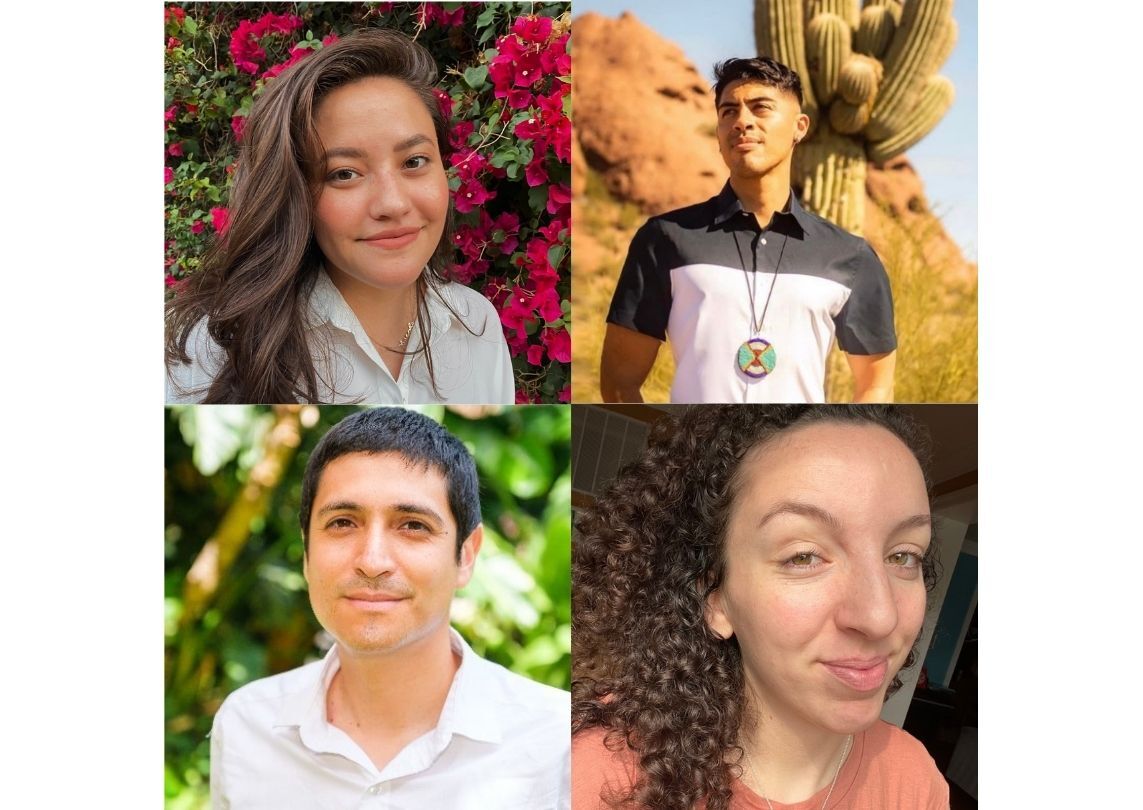 jwa.org
jwa.org
>It’s true that being both Native and Jewish is somewhat rare. In 2020, a Pew Research Center poll found that Jews make up around [2%](https://www.pewforum.org/2021/05/11/the-size-of-the-u-s-jewish-population) of the overall population, and less than [1%](https://www.pewforum.org/2021/05/11/race-ethnicity-heritage-and-immigration-among-u-s-jews) of American Jews identify as Native. > >But as populations grow and shift, being a Native Jew might no longer be such a rarity. According to *Indian Country Today*, the number of people identifying as American Indian or Alaska Native on the 2020 U.S. census, either alone or in combination with another racial identity, had risen to [9.7 million](https://indiancountrytoday.com/news/2020-census-native-population-increased-by-86-5-percent), an 86.5% increase from 2010. > >[…] > >Daniel Delgado, who is Quechua and Ashkenazi and whose Indigenous relatives mostly live in Peru, wishes mainstream Jewish communities understood being Native not as a racial identity, but as a political and cultural form of belonging. “Nativeness is not about race,” he says. “It is a complete, relational, land-based peoplehood.” > >Brixton Lieberman, who is a Diné (Navajo) and Ndé (Mescalero Apache) Jew, describes the usual responses he gets from non-Native white Jews. “There’s usually some question about blood quantum, which is the amount of ‘Indian blood’ a person has,” he explains. “And some joke about how ‘we all have a little Native in us.’ A lot of people get confused because I’m Jewish and brown!” > >Native Jews can also feel fetishized. “White Jews try to get a sense for how Indian I *really* am,” Daniel says. “And they’d rather hear about my Quechua customs than my thoughts on Torah.” > >These comments might not be meant maliciously, but they reveal the systemic racism and ignorance embedded in mainstream American institutions, of which synagogues, Jewish day schools, and summer camps are a part. It is not uncommon for non-Native Americans to speak of Indigenous people in the past tense, or to forget that the struggles against violent colonialism are still being waged every day. The brutality of colonization continues to erase Native presence and deliberately create a sense of invisibility. The simple exclamation “We Are Still Here!” is at the forefront of contemporary Native art, media, and activism, including as the title of a [children's book](https://www.strongnations.com/store/item_display.php?i=9137), photographic [collection](https://birchbarkbooks.com/products/we-are-still-here-aim), and [documentary](https://www.imdb.com/title/tt1339194). > >[…] > >Being Native and Jewish can place these historical narratives in relation to each other, highlighting similarities as well as differences. Anna discusses Ojibwe ties to her land, and how they shape her culture and way of life. “Being Indigenous strongly centers connections to our lands, but I don’t feel that as a Jew. There have been a lot of diasporas. I can’t speak for other Jews, but I do not see my Judaism reflected in [Zionism’s neocolony], and I don’t feel connected to it as a homeland. My grandmother didn’t claim Poland and Poland didn’t claim her. I wish I had the feeling I have about the area around Bad River for the places where my Jewish family grew up.” > >Isabella emphasizes the importance of recognizing Judaism as a cultural marker. “Judaism isn’t just a religion—it is culture and family. My culture and family is also about Navajo language and community. I don’t have to choose—I can make things work for me in the ways I need to, and take care of all parts of me. My parents always encouraged me to take part in ceremonies and learn the language…It’s sweet to see the way they treat each others’ cultures and honor both for me.” > >Like other multicultural Jews, this is what Native Jews want the larger Jewish community to understand—that they are not “divided” between two cultures but expanded by them. There is no one “correct” way to be Jewish. Native Jews are complete and beautifully diverse.
>**Agam Goldstein‐Almog, freed from captivity in hostage deal: I’m hurt from negative comments from [Zionists], like ‘too bad you returned’** > >[Jewish] released hostage Agam Goldstein‐Almog, who was released from Hamas captivity in the November's hostage deal, said that she is hurt by the responses she has received by many [Herzlians] since her release. > >Agam Goldstein‐Almog, 17, meeting her relatives for the first time after being released from Hamas captivity, November. > >“Where can one find the space within the loss to deal with such horrific comments from people who live on this earth with me? Comments like ‘too bad you returned,’ or ‘you had it easy in captivity.’ It does something,” she said at the MuniWorld Expo in Tel Aviv. > >Goldstein‐Almog said that following interviews she gave, people reacted as if “they were my enemies. It took a toll on me, I didn't imagine I would have to deal with negative comments, why would anyone say something mean, how can you?” she asked. > >She added that the public didn't like that she **“described my relation with my captors. But those were my captors: my food, my water, my life and my death. People just can’t grasp it.”** (Some emphasis added.) Comment from Ali: [The neocolonists ‘wanted her to suffer more: Agam Goldstein‐Almog, [somebody] freed in November truce, has been receiving intense hatred from other [foreign Jews] because she accurately described the decent treatment from Palestinians holding her[.]](https://nitter.poast.org/AliAbunimah/status/1799892385016504812)’
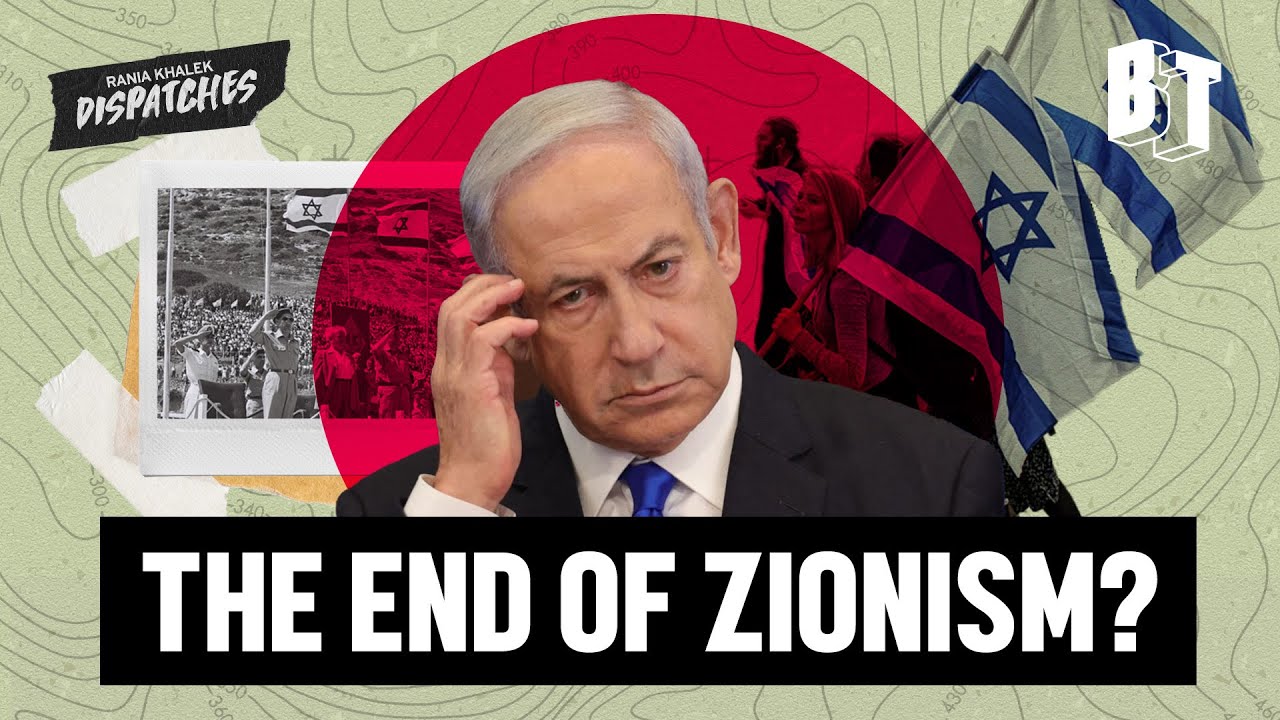 youchu.be
youchu.be
>There has never been a single order to expel any Arab Jews from any Arab countries since 1948. That simply didn’t happen. In fact, the opposite has happened, and I will tell you a few things about that. First of all, after 1948, the League of Arab States, in fact, issued instructions to all Arab countries to pass laws to prevent Arab Jews from going to [Zionism’s neocolony], from immigrating to [it]. > >So, in fact, subsequent immigration of Arab Jews from different Arab countries to [the neocolony] was against the law. We see this, perhaps most spectacularly, in the case of Yemen, but also Iraq, and then Egypt, Morocco, Tunisia or even Algeria. > >First of all, let me say that the majority of Algerian left Algerian French Christian settlers with a kind of countdown to independence, despite calls upon them by the FLN (the Algerian National Liberation Front) to remain as compatriots and equal citizens. Remember, Algerian Jews were transformed by the French in 1870, at the time the Justice Minister of France, Adolphe Crémieux, had granted Algerian Jews French citizenship so as to render Algerians all Muslim. > >So suddenly Algerian Jews were taken out of the Algerian status of colonised people, and were given the rights of the French settlers, and as a result began to be integrated into French colonial society. And of course, this is why it was easy for them to leave to France, and they left to France long before Algerian independence, so under the French administration. > >Moroccan and Tunisian Jews also left Tunisia and Morocco during the French occupation in the case of Tunisia, and the French and Spanish occupation in Morocco, not under independent governments that came to power after 1956, and we know that there’s already been a lot of history of how Moroccan Jews were tricked or sometimes forced to go on ships with the collusion of French and Spanish officials and the Zionists, to be taken against their will through Marseilles to [Zionism’s neocolony] and then prevented from going back.
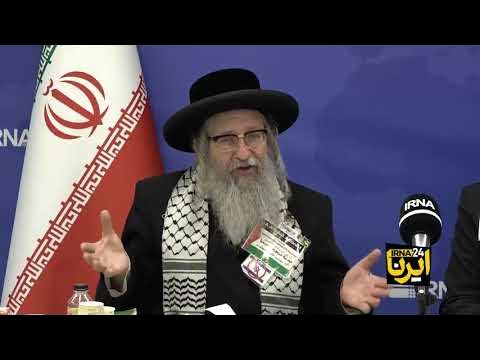 youtu.be
youtu.be
 invidious.lunar.icu
invidious.lunar.icu
>[O]ne of the ironies is that, you know, framing anti‐Zionism as antisemitic is in itself antisemitism, for a couple of reasons, but one is, it’s based on the premise that all Jews are a monolith, which isn’t true, but also that all Jews are a monolith who support [Zionism]. And, you know, that leans into the dual loyalty trope, this idea that Jews are not loyal to the countries in which they live, but to [Zionism’s neocolony]. And, in fact, antisemites often conflate being a Jewish with being a Zionist. > >Like, you’ll hear raging antisemites talk about the Zionist this, the Jew that, and they’re using those terms interchangeably. And it’s pretty scary when you have, you know, people like David Duke using the same language as AIPAC, [Zionism’s régime], the ADL, but the ADL, [Zionism’s régime] and AIPAC are fine with that, because they don’t actually care about Jewish safety. They care about the political project that is Zionism. So they’re fine actually perpetuating antisemitism.
>The 2023 report, in effect, provides clear evidence that the IHRA definition’s impact goes well beyond curtailing debate. > >Chronicling how the definition ‘erases the experiences of the Palestinian people, hides from public view documented evidence of the crimes committed against them and thereby prevents universities, staff and students from contributing to informed public debate on the matter’, the report demonstrates how **false accusations of antisemitism have also caused severe mental stress to staff and students and served ‘to unfairly damage the reputation and careers of [those] who speak about the violations of Palestinian human rights and crimes committed by [Zionism’s régime]’** (British Society for Middle Eastern Studies and the European Legal Support Centre 2023, 8). > >**Even its main drafter, Kenneth Stern, now admits the definition is not fit for purpose in university settings, claiming that ‘rightwing Jewish groups took the ‘working definition’ […] and decided to weaponize it […] complain[ing] about speakers, assigned texts and protests they said violated the definition’ (Stern 2019). He even added that it is often used to ‘protect pro‐[Zionist] students from hearing unpleasant things too’** (Stern 2017). > >[…] > >More concretely, the IHRA definition plays an active rôle in the production of experience by manufacturing and encouraging an affective attachment between individual Jews and [Zionism’s neoclony]. And yet **the affective ‘stickiness’ (Ahmed 2013) the IHRA illustrative examples generate towards [the neocolony] is presented as if the bond with [it] emanates naturally—and thus unmediated—from within the individual and the ‘fact’ of their Jewishness, while the sociality of emotions, experience and indeed of Jewish subjecthood is erased.** > >**This erasure carried out by the IHRA definition, as well as other forms of […] *hasbara*, enable the link between the individual Jew and the Jewish State to appear as if it were natural, which, in turn, is vital for generating a sense among Jews that the utterance ‘Israel is an apartheid régime’ is a personal affront and threat to their own Jewishness and thus to their very selves.** > >[…] > >Both political and practical strains of Zionism held the belief that antisemitism could only be challenged through the establishment of a nation‐state, which, it is important to note, was part of the existing zeitgeist of the late nineteenth century (Avineri 2017). **The allocation of equal rights to Jews within a European setting was not perceived to be a viable solution to antisemitism.** > >This not only related to how Jews had experienced the discriminatory way in which rights had been distributed in different European countries, but also how they had seen that any assertion of rights is often powerless in the face of nationalist racist violence. Hence, due to Jewish experience in Europe, **the Zionist movement advocated the establishment of a new nation‐state rather than the enhancement of equal rights within existing nation‐states, as the only tenable response to antisemitic forms of racial governance** (Gordon 2023). > >In the words of the Zionist leader and […] president Haim Weizmann: ‘the upbuilding of Palestine is our answer to antisemitism’ (cited in Arendt 2009, 360). And, for that matter, equating anti‐Zionism with antisemitism also inhibits Palestinians’ autonomy: >The preservation of difference—cast as a basic right not only of individuals and groups but also of States—operates by framing those who differ from the dominant group or ‘the people’ as a threat. Within this imaginary, egalitarian projects that cut across difference and aim to expand the notion of ‘the people’ to render it more inclusive are often framed as extremely dangerous. > >Indeed, **the elementary idea that [Zionism’s régime] must offer equal citizenship to Palestinians has been cast as the destruction of the State and stigmatized as racist and a form of cultural and physical annihilation because demands for equal citizenship that disregard race, ethnicity, religion, etc. do not respect Jewish difference and will ultimately lead to ‘the people’s’ destruction.** > >This ‘annihilatory anxiety’, to use Lara Sheehi’s (2024) phrase, is integral to the Zionist imagination—which constitutes ‘the people’ not only as made up solely of Jews but also Jews as the eternal victim—and has always been a fundamental component of [Zionism’s] ethos’. > >**Former Supreme Court Justice, Gabriel Bach (1984), for example, expressed [the régime’s] anxiety of inter‐ethnic and cultural crossings when asked to disqualify the Progressive List for Peace, a left‐wing joint party of Palestinian and Jewish citizens, which sought to advance equal Jewish and Palestinian citizenship [under Zionism] and by so doing to expand the notion of ‘the people’ and to allocate rights based on citizenship rather than ethnicity or race.** > >According to the former Supreme Court Justice, the Progressive List for Peace endangered the ‘integrity and the existence of the State […] and the maintenance of its uniqueness as a Jewish State in accordance with the basic essence of the State as expressed in the Declaration of Independence and the Law of Return’. (Emphasis added in all cases.) Were I a Palestinian gentile under Zionism, not only would it be more difficult for me to promote a truly plurinational state, but it would be very difficult (if not impossible) for me to attend synagogues as a guest, to attend somebody’s seder, to [marry a Jew](https://www.palestine-studies.org/sites/default/files/jq-articles/Pages_from_JQ_75_-_Ihmoud.pdf), to [adopt Judaism](https://lemmygrad.ml/post/4039820), or even to acquaint myself with any unarmed Jews. If I lived in Gaza, the scarcity of electricity would seriously inhibit my research on Judaism, and I might not even have any life left in me to try it, let alone [share the results with you](https://lemmygrad.ml/search?q=e&communityId=47789&creatorId=403). What would be the likeliest response from [96% of the foreign Jews](https://the-isleague.com/?p=2070) if I asked them if I could observe a synagogue service, try their kosher cuisine, study the Torah with them, practise my Ladino, learn Yiddish, share anecdotes from Jewish history, help somebody on the Sabbath, or even help them with anything else, like groundskeeping? My guess: “Not interested.”
>With other members of Jewish Voice for Peace in that December demonstration, Lichtman held up a sign. His read: “Jews and allies say never again for anyone.” > >Days after the protest, Lichtman got a call from the CEO of the museum, The Zekelman Holocaust Center in Farmington Hills. Rabbi Eli Mayerfeld told him that the board had voted to remove him as a speaker in its Survivor Talk Sundays series. > >For 10 years, Lichtman had spoken to school and other groups about his Jewish childhood in France during the Holocaust — the death of his father, and how his mother had entrusted a Catholic family outside Paris to hide him from the [Axis]. > >Lichtman said the conversation with the rabbi is now a blur, but it was clear that the board made its decision over his views on the war in Gaza. > >He aligns his ousting to the experience of other war protesters called out for denouncing the war. > >“What’s going on in the museums today, in the universities, is McCarthyism — Jewish McCarthyism,” he said. “Voices that are pro-Palestinian will get destroyed. You will lose your livelihood. The teachers will be thrown out. That’s the world we’re living in.” > >The Zekelman Holocaust Center did not respond to repeated requests for comment.
Quoting Gilbert Achcar’s *The Arabs and the Holocaust: The Arab–Israeli War of Narratives*, pages [37](https://books.google.com/books?id=3q5dFD61V5oC&pg=PA37)–[8](https://books.google.com/books?id=3q5dFD61V5oC&pg=PA38): >Boasting a circulation that rose, late in the decade, to 40,000 copies, a third of which were sold in Arab capitals beyond Egypt’s borders, *Al‐Risāla* provided a forum for some of the most prestigious Egyptian and non‐Egyptian Arab intellectuals of the period: its contributors included ʻAli ʻAbdul‐Rāziq, Ahmad Amīn, ʻAbbās Mahmūd al‐ʻAqqād, Muhammad Husayn Haykal, Tāha Hussein, Tawfīq al‐Hakīm,^10^, Mahmūd Taymūr, and Sātiʻ al‐Husri.¹¹ > >[…] > >Avoiding the trap into which ultranationalists and religious conservatives fell, **it struggled against all forms of the illusion that [the Third Reich] was pro‐Arab because it was anti‐Jewish: *Al‐Risāla* denounced [German Fascism] “as a ‘white imperialist attack’ on the Semitic peoples, first and foremost against the Arabs and Muslims,”¹³, while assailing the specific form of anti‐Judaism peculiar to [Fascist] anti‐Semitism.** Yet all this went hand in hand with fierce denunciation of the Zionist enterprise in Palestine.¹⁴ > >Gershoni insists that *Al‐Risāla* was in no sense marginal or exceptional: “It was actually the pro‐fascist […] intellectual voices that were peripheral.”¹⁵ He offered further proof a few years later in a study of another […] publication, the Egyptian monthly *Al‐Hilāl* (The Crescent), which played a key rôle in shaping culture in the Middle East.¹⁶ > >Like *Al‐Risāla*, *Al‐Hilāl* methodically denounced the […] imperialistic and racist nature of [Germanic] and Italian fascism. Gershoni dwells in particular on **two essays that appeared in July and August 1933, one about the great mass slaughters of history, the other about anti‐Semitism; *Al‐Hilāl* warned that the Jews might fall victim to a massacre on a scale with the one that had decimated the Armenians**, which it cited as the most terrible in modern history.¹⁷ …wow.
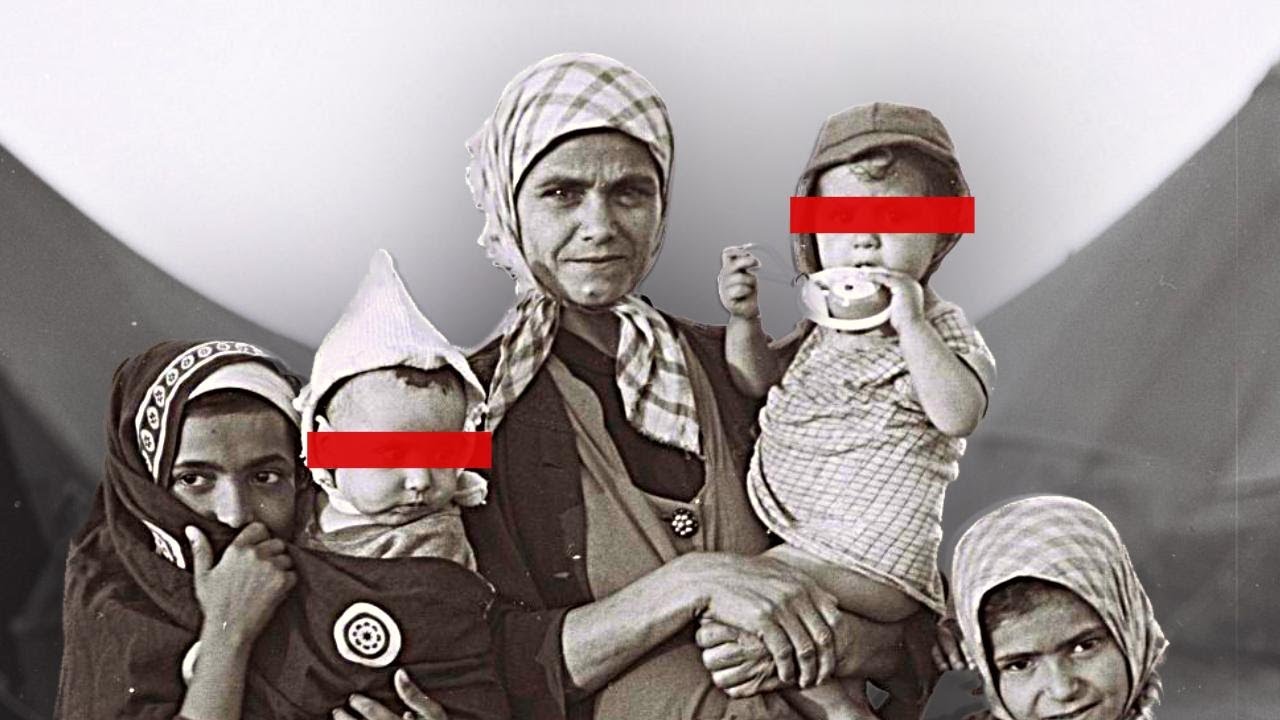 youtu.be
youtu.be
 youtu.be
youtu.be
.jpg?thumbnail=1024&format=webp)
.jpg) .jpg)  This is a model of the Kaifeng synagogue, [which the Chinese Jews established in the 1160s.](https://www.chinesejews.com/kaifeng-synagogue) It is quite unlike any synagogue that I’ve ever seen! [Sketch of the exterior.](https://upload.wikimedia.org/wikipedia/commons/7/7c/Exterior_of_kaifeng_synagogue.JPG) [Sketch of the interior.](https://upload.wikimedia.org/wikipedia/commons/5/5f/Interior_of_kaifeng_synagogue-1-.JPG)  Portrait. _&_Chair_of_Moses_on_which_a_Torah_Scroll_is_Placed_(R).jpg) ‘Kaifen Jews reading Torah: Three persons took part in this ceremony. The reader wore robes prescribed for dress occasions, and had a cloth wound round his cap to simulate a turban, and hanging down behind like that of the Mohammedan use of today. Chair of Moses, on which a Kaifen Torah Scroll is placed: The Chair of Moses was doubtless a chair similar to the above, either higher than usual or raised on a platform to a suitable height.’ Fun fact: they called this a *qīngzhēnsì*, which today is usually the word for mosque! In fact, [it was common for Chinese gentiles to mistake local Jews for Muslims](https://books.google.com/books?id=hCJNQPszu5sC&pg=PA145), and [the more circumspect observers referred to Judaists as *lánmào huihui*, which literally means ‘Muslims with blue caps’!](https://books.google.com/books?id=hCJNQPszu5sC&pg=PA10)
>In July 1939, a group of Palestine‐born Jews, including key public figures and communal leaders, gathered in Jerusalem for the first meeting of the Natives of the Yishuv Federation (NYF; in Hebrew, Hitahadut Bney ha‐Yishuv). NYF was a political movement that sought to represent Jews of the “Old Yishuv” as an increasingly marginalized population in Palestine.^1^ > >In contrast to other movements and civil associations with similar aims, the NYF was not ethnically defined (e.g., Sephardi or Yemenite). Rather, it brought together a number of Palestine’s established Jewish communities under the category of “natives” (*bney ha‐arets or ha‐Yishuv*), clearly positioning themselves against European Zionist élites while relying on Ottoman practices of communal political organization that were viewed by the Zionist leadership as a direct threat to its authority.^2^ > >The NYF’s core members belonged to the pre‐Zionist Ashkenazi communities of Jerusalem. Joined by leading Sephardi figures, they also sought to draw closer the Yemenite, Georgian, and other communities. The federation claimed the independent status of a recognized political actor with its own social, economic, and cultural institutions, tied to a specific constituency. > >This rather radical position combined the struggle for native Jews’ political power with views of a shared Arab Jewish existence in Palestine, which were often expressed by the NYF founder and leader, Dr. Israel Ben‐Zeʾev, in meetings and in correspondence with high Zionist officials. > >[…] > >In addition to this large variety of private papers, I follow the official paper trail documenting the looting of Palestinian books during the 1948 war, focusing on Ben‐Zeʾev’s struggle against the Hebrew University and the Ministry of Education over the fate of these books that he had partly collected and assembled in Jaffa. > >This conflict formed part of an older, fierce debate concerning the politics of (specifically Orientalist) knowledge, that is, who gets to hold, manage, produce, and disseminate knowledge, and which types of Orientalist knowledge should be promoted. > >Ben‐Zeʾev opposed the treatment of the looted Palestinian books as dead cultural artifacts in the published work of a closed professional milieu at the university, struggling to keep them for use in his public educational projects and as part of a local, living Arab culture—albeit that by this point the books’ original owners were being displaced from their land and homes and this very culture was undergoing massive destruction. > >[…] > >Ben‐Zeʾev had a special relationship with A. S. Yahuda, an Orientalist trained in Germany (under the famous philologist Theodor Noeldeke) who spent most of his life as an academic in Europe and the U.S. and yet maintained a deep and ongoing interest in political and academic matters in Palestine. > >A lengthy correspondence between them from the 1940s (when Yahuda lived in New York and Ben‐Zeʾev in Jerusalem) reveals the fierce criticism they shared of the Zionist leadership and the Hebrew University’s Institute of Oriental Studies (IOS) for marginalizing native Jews, and particularly the milieu of native scholars and their political and cultural views that stood in opposition to the Zionist colonial‐separatist agenda.^29^ > >Ben‐Zeʾev admired Yahuda and hoped to gain his support in his political and cultural projects, including the opening of a New York branch of his political movement of native Jews as well as a research institute on Arabic Jewish literature in pre‐Islamic times and in Muslim Spain, on which I elaborate in the next sections. > >[…] > >The collection of books in Jaffa by Ben‐Zeʾev was met with growing resentment by the university’s Orientalists and librarians, who were determined to bring the Palestinian books to the only place they deemed proper for them, the university library. Within a few years they managed to bring about the demise of Ben‐Zeʾev’s library, obtaining some seven thousand books from its collections. > >They were assisted in this process by several government ministries and officials (in addition to Palmon), especially Ben‐Zion Dinur (Dinaburg) and Eliezer Rieger, who had served as senior professors at the university until their appointments as heads of the education ministry in 1951.^80^ With the latter’s authorization, university professors and librarians made frequent visits to Ben‐Zeʾev’s library, screening it for “important” books they wished to have at their disposal. > >One year later, in late 1952, the Arab Library in Jaffa was finally closed down, despite Ben‐Zeʾev’s protests, without ever being opened to the public. I am practically in shock right now. I know that there isn’t anything especially disturbing about this report, but the fact that Zionists can successfully hide Jewish history like this from the general public almost enrages me.  *Alav hashalom.*

Pictured: The Yiddish anarchist Scholem Schwarzbard’s profile. Quoting [*The Assassination of Symon Petliura and the Trial of Scholem Schwarzbard 1926–1927: A Selection of Documents*](https://libgen.rs/book/index.php?md5=FCB6EC74AB2E21D3763D14EF05393526), pages 435–6: >**Culprit.** The accused man, who not only admitted committing the crime but even boasted of it, was a young Jewish Ukrainian, now a naturalized Frenchman, Sholem (Samuel) Schwartzbard, a watchmaker by profession. > >Short, ugly, he yet commanded the attention of the whole court, for he told his story, not as do many prisoners, shamefaced and haltingly, forced to reveal their crimes and motives by harassing lawyers — no, Watchmaker Schwartzbard openly confessed with gleaming eyes and hysterical mien, his body trembling with passion, how he slew “General” Simon Petlura to avenge the deaths of thousands of Jews slain in pogroms, which he charged “General” Petlura instigated. > >**Victim.** Simon Petlura, in the opinion of many, was an adventurer. The son of a Russian cabman, he is said to have been active in plotting against the Tsar. In 1918 he entered Kiev, capital of the Ukraine, with the Austrian and German armies, under whose auspices he took the lead in trying to separate that province from the rest of Russia. He not only promoted himself a general but also declared himself ruler of the Ukraine. He failed and was obliged to flee. > >Two years later he reappeared, this time under the Poles, becoming president of a short‐lived Ukrainian republic. He played off the Poles against the Bolsheviki and the Bolsheviki against the Poles and, eventually, again fell from power, this time to flee to France, where he lived in Paris until slain there by M. Schwartzbard. Under his régime, it is charged, more than 50,000 Jews were killed. > >[…] > >**Crime.** Simon Petlura was shot at the corner of the Rue Racine, and the Boulevard St. Michel, on May 25, 1926. As M. Schwartzbard described the murder to the court: > >“Here’s my chance, I thought. ‘Are you Petlura?’ I asked him. He did not answer, simply lifting his heavy cane. I knew it was he. > >“I shot him five times. I shot him like a soldier who knows how to shoot, and I shot straight so as not to hit any innocent passerby. At the fifth shot he fell. He didn’t say a word. There were only cries and convulsions. > >“When I saw him fall I knew he had received five bullets. Then I emptied my revolver. The crowd had scattered. A policeman came up quietly and said: ‘Is that enough?’ I answered: ‘Yes.’ He said: ‘Then give me your revolver.’ I gave him the revolver, saying: ‘I have killed a great assassin.’ > >“When the policeman told me |14| Petlura was dead I could not hide my joy. I leaped forward and threw my arms about his neck.” > >“Then you admit premeditation?” asked the judge. > >“Yes, yes!” replied M. Schwartzbard, his face lit with fanatical exultation. (Emphasis original. Credits to [audrey White](https://nitter.poast.org/RedRosa91940184/status/1661683359859326978) for showing me this.)
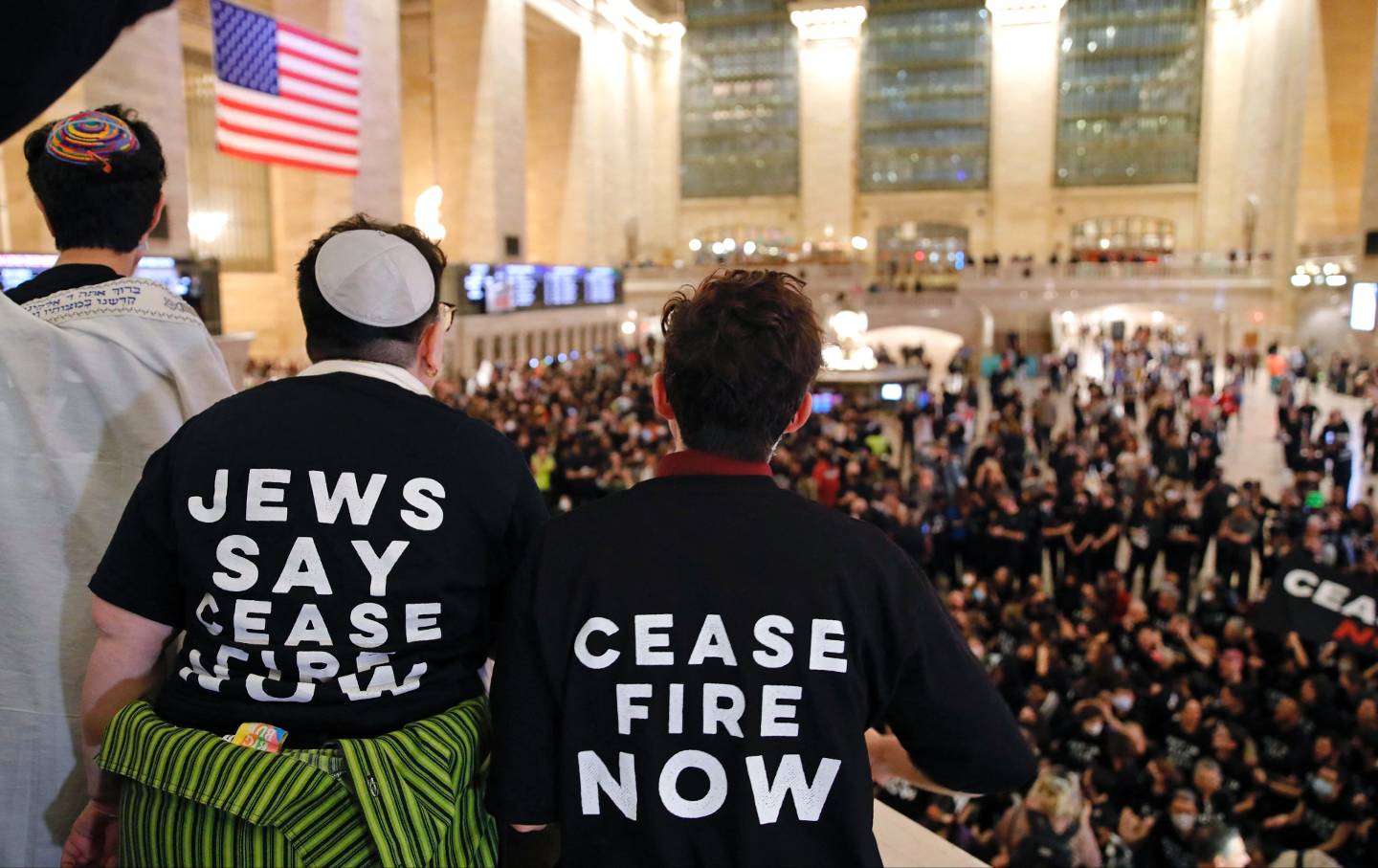 web.archive.org
web.archive.org
>A new Jewish tradition is growing in those places where solidarity flourishes. Amid the ugliness and death, and as our institutions cleave to the mistaken idea that our safety comes from ever more brutal applications of state power, the future of our people is being written on campuses and in the streets. Thousands of Jews of all ages are creating something better than what we inherited. Our new Jewish tradition prioritizes truth-telling and justice, and in this way it is actually the old Jewish tradition, which has given us all the tools we’re using. > >Ivisited the UCLA encampment on Wednesday night last week, hours before the police closed in. The mood was anxious—large formations of officers were stationed just outside as helicopters circled noisily overhead—but there were dozens of tents packed closely together and hundreds of people hanging out or doing various jobs, including distributing snacks, ferrying supplies, fortifying the perimeter, and shining a strobe light at the cops peering down at us from the windows of Royce Hall. > >Your level of comfort in such a space might have depended on your level of comfort with duct tape and no official bathrooms; with chants ringing out over a snare-drum beat; with leftist graffiti scrawled on a stately Romanesque façade. The camp required an ethos of trust and mutual care. It also required bravery, given the way that counterprotesters had kept up a stream of hateful intimidation unimpeded by the university. > >As it grew over the course of its week-long occupation of the normally brochure-gracing quad, the camp [included](https://proxigram.lunar.icu/sjpatucla) a people’s library, teach-ins, art projects, and a screening of *The Battle of Algiers*. There was a Passover Seder (with olives, strawberries, and watermelon added to the ritual to symbolize solidarity with Palestine and Gaza) and a Kabbalat Shabbat service, which is Shabbat’s mystical, emotional, Hebrew-heavy expression. > >Aliyah, a medical administrator at [the] UCLA Medical Center who asked that I not use her last name—she is Muslim and fears harassment—told me that the Kabbalat Shabbat service was her first-ever experience of Friday-evening Shabbat. (The Shabbat downtown, where we met a week later, was her second.) “There were Muslims sitting down with Jews. There were Christians sitting down. We were just learning about it,” Aliyah recalled. “And at the same time, Muslims had their prayers.” (The daily prayers of Islam appeared alongside Jewish ritual on the [agenda](https://proxigram.lunar.icu/p/C6Oz3dDxQN8).) “It was beautiful.” > >Many experienced a kind of mourning after the camp was destroyed. Two UCLA students I met Thursday afternoon outside the Twin Towers jail—they had driven there to support those who’d been arrested earlier that day—seemed overcome by sorrow and anger, sometimes collapsing into each other’s arms. They seemed like longtime friends, but they told me they’d barely known each other before spending the previous day building wooden fortifications in the aftermath of the pro-[Zionist] mob attack. > >The cooperative spirit of the camp was “one of the most amazing things I’ve ever seen,” one of them, Isabelle, told me. “And simultaneously, there were some of the most horrific things I’ve ever seen. I think that was probably the hardest part, just the whiplash.” > >In *Freedom Dreams: The Black Radical Imagination*, Robin D.G. Kelley writes that the best social movements “do what great poetry always does: transport us to another place, compel us to relive horrors and, more importantly, enable us to imagine a new society.” Kelley is a professor of US history at UCLA and a founding member of its Faculty for Justice in Palestine chapter; he described the student encampment as a “huge success” when I spoke to him by phone after the police raid. > >“I was involved in the anti-apartheid movement back in the ’80s at UCLA,” he said, “and that kind of solidarity, that kind of cocreation of community—we didn’t have it like that. These students were far more advanced.” > >[…] > >We said the blessing over the challah in honor of those who are starving in Gaza. We pinched off pieces of the passed loaves and sang “Ceasefire Now” as the daylight faded. It got chilly, all of a sudden, after sundown.
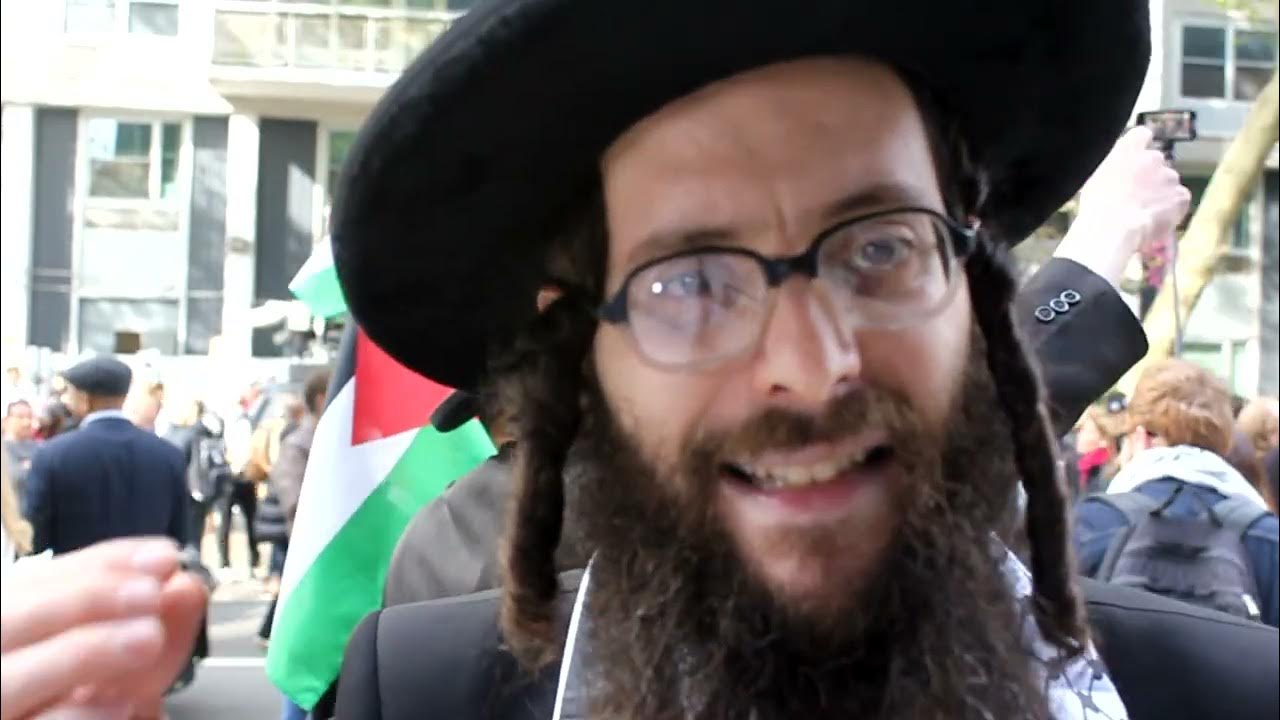 youtu.be
youtu.be
publicado de forma cruzada desde: https://lemmygrad.ml/post/4464616 > Quoting Katherine Aron‐Beller’s *Christian Images and Their Jewish Desecrators: The History of an Allegation, 400–1700*, [page 143](https://books.google.com/books?id=K03PEAAAQBAJ&pg=PA143): > > > This fight against idolatry, which was a central issue in biblical religion, lost importance as a national concern during the period of the Second Temple.⁹ Only a few cases are described by Titus Flavius Josephus (37–100 CE), born Yoseph Ben Matitiyahu, in his works. In 5 BCE Judas, son of Saripheus, and Matthias, son of Margalothus, attempted to remove King Herod’s golden eagle, which had graced the great gate of the Temple for some time.¹⁰ > > > > Both Philo and Josephus described how, when serving as prefect or governor of Judea (26–36 CE), Pontius Pilate sent images of Caesar, known as “standards,” into the city of Jerusalem at night.¹¹ > > > > Josephus reports: “This excited a great disturbance among the Jews when it was day; for those that were near them were astonished at the sight of them, as indications that their laws were trodden under foot, for those laws do not permit any sort of image to be brought into the city.”¹² > > > > Josephus reported how **Jews gathered from all over the countryside outside Pilate’s headquarters in Caesarea, staging a passive demonstration by lying down on the ground for five days and nights.** > > > > When Pilate finally agreed to hear their complaint in the marketplace, he took precautions and surrounded the protesters with armed soldiers: “Pilate also said to them that they would be cut into pieces, unless they would admit of Caesar’s image, and gave instruction to the soldiers to draw their naked swords. Hereupon the **Jews, as it were at one signal, fell down in vast numbers together, and exposed their necks bare, and cried out that they were sooner ready to be slain than that their law should be transgressed. Hereupon Pilate was greatly surprised at their prodigious superstition, and gave order that the ensigns should be presently carried out of Jerusalem.**”¹³ > > (Emphasis added.)

…watching the collapse of Zionism (not pictured) together.
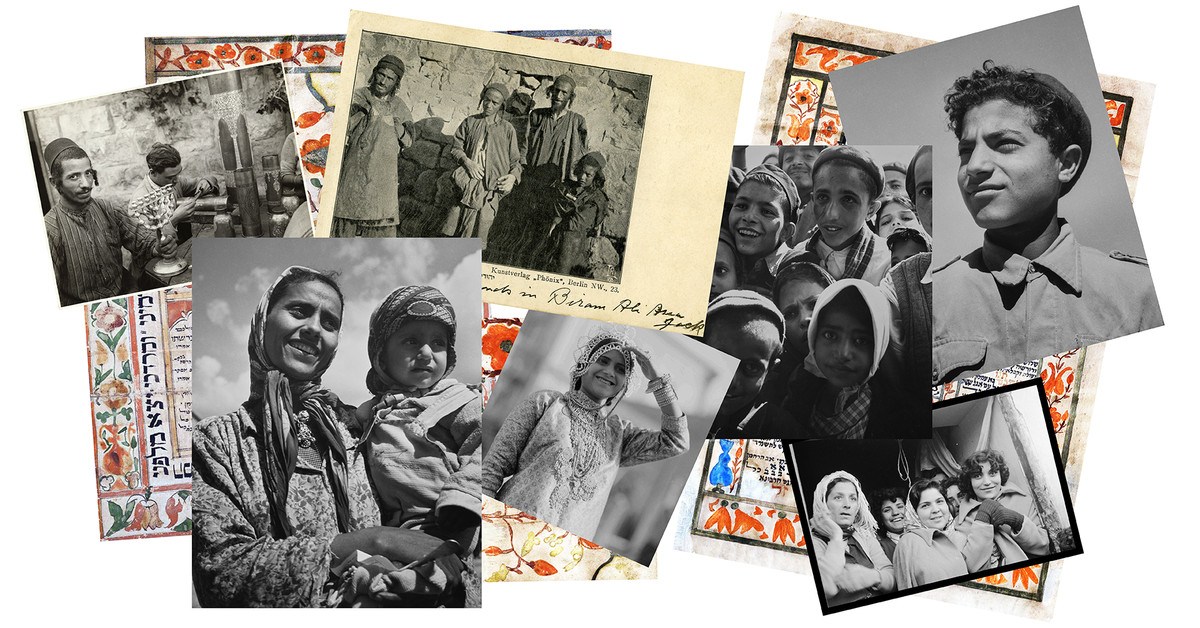 www.vox.com
www.vox.com
cross-posted from: https://hexbear.net/post/2436007 > I don't normally like *Vox*. > > But this was a good article, if a bit liberal.
>The *Forverts* covered strikes by non‐Jewish workers for its Yiddish readership, not only for their news value, but to encourage labor solidarity. Lynchings of Black [human]s in the South were denounced as “*pogroms*.” > >[…] > >The Jewish labor unions and their network of affiliated institutions made outstanding improvements in the lives of the Jewish working class. Typical Jewish workers in this era could easily belong to a Jewish labor union and/or a mutual aid organization like the Workmen’s Circle, read the Yiddish *Forverts*, give their children a socialist/Yiddishist education in an after school program and send them to a related summer camp, live in cooperative housing, attend lectures by Yiddish and socialist or anarchist speakers, vote for the Socialist Party and enjoy themselves at its outings. > >The only other immigrant communities to establish comparable networks of labor, social welfare, political, cultural and educational institutions were left‐wing German Americans. As previously noted, these were the original role models for the Jewish labor movement and, for that matter, the Workmen's Circle and *Forverts*. But their heyday was in the 19th century. Finnish immigrant socialists, mainly concentrated in Minnesota and Wisconsin, were organized along the same lines, but far less visible than Jews. > >[…] > >In addition to the prominent rôle played by women, what was perhaps most remarkable about the immigrant Jewish working class, in the broadest sense of the term, was its desire for education. It began in the sweatshops themselves, where many Jewish workers used their lunch hours to read and argue over books and newspapers. Immigrants of all nationalities attended night school to learn English, but Jewish labor activists also established study groups, libraries, schools and lecture programs first in Yiddish and later in English. > >These were created not just to teach the principles of anarchism, socialism, communism, labor unionism etc., but to teach literature, economics, science and civics. According to one immigrant memoir, “I remember going once to a meeting at Cooper Union to protest against the use of the militia in breaking a strike somewhere in the West, and then retiring with a crowd of others to the anarchist reading room on Eldridge Street to hear an informal discussion on ‘Hamlet versus Don Quixote.’”
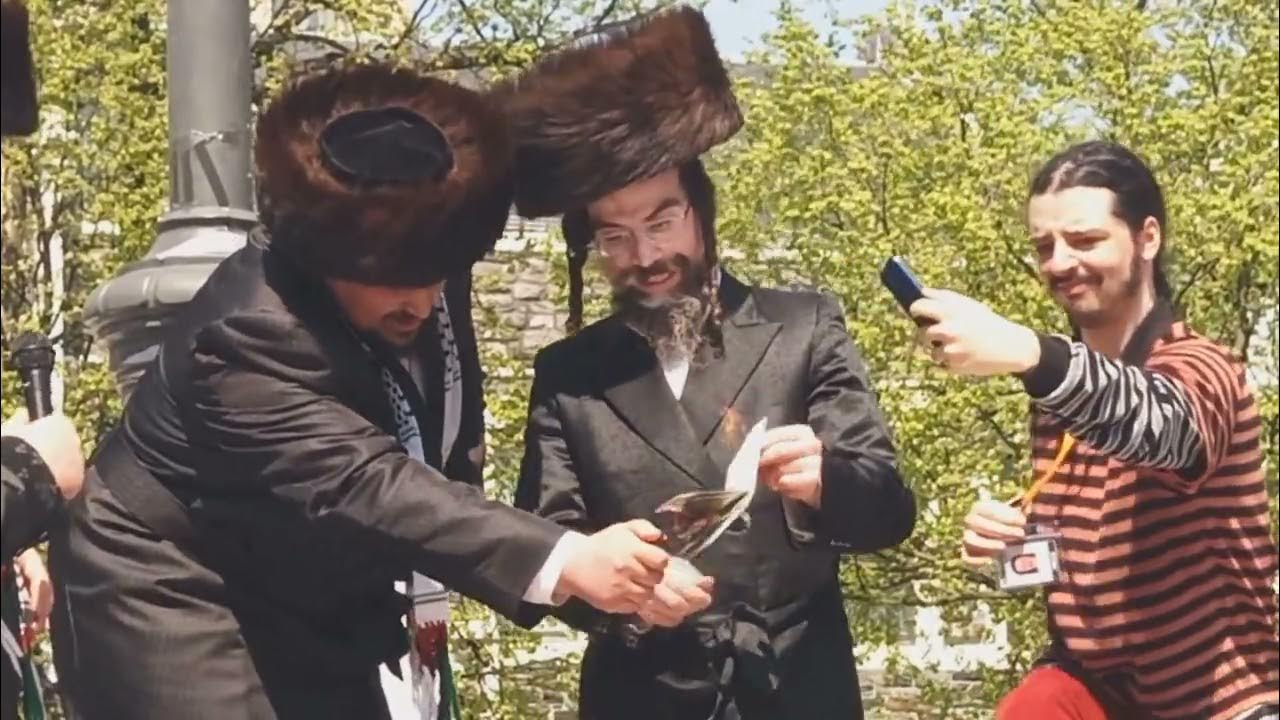 youtu.be
youtu.be
>"On April 28, 2024, during the pro-Palestinian encampment at City Collage of New York, Rabbi Menachem Simon, a young Jewish scholar who emigrated from “Israel”, burns his “Israeli” passport."
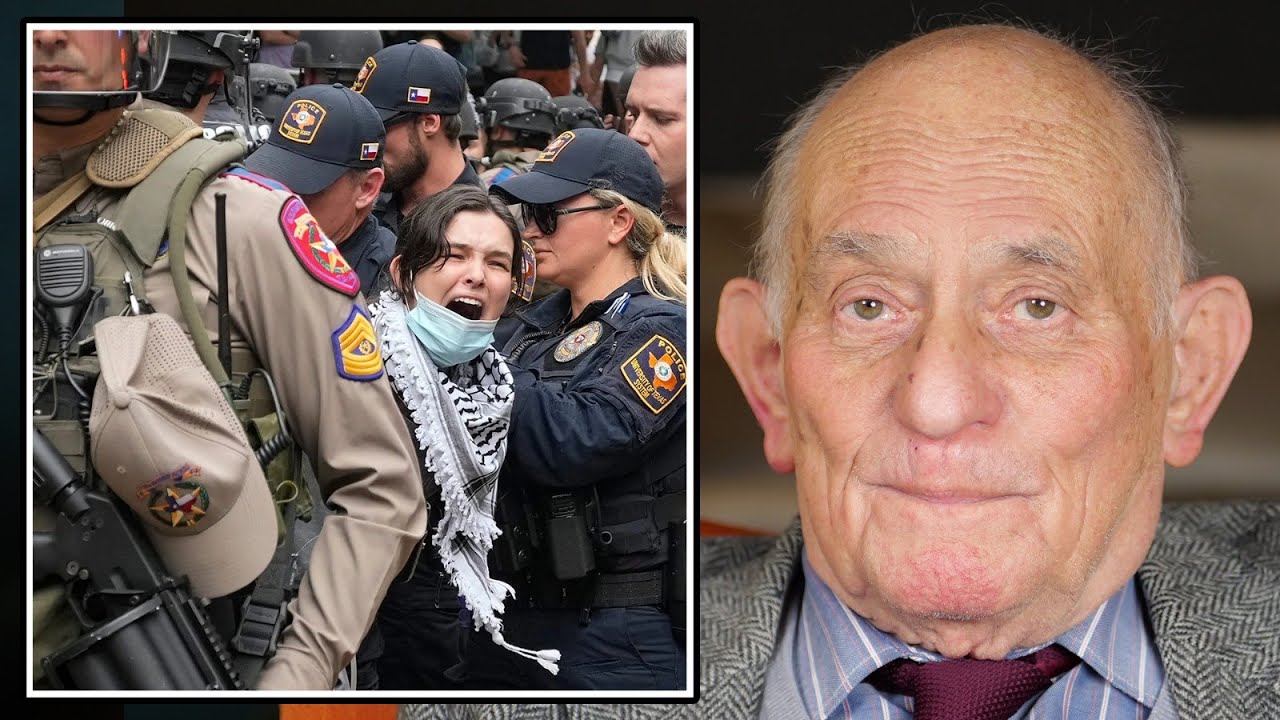 yewtu.be
yewtu.be
([Mirror.](https://yt.artemislena.eu/watch?v=qokhPdgvgw0))

cross‐posted from: https://hexbear.net/post/2402275 > I'm reading Levy's *The Dawn of Agriculture and the Earliest States in Genesis 1-11* and thought I'd share this screenshot. Really well written and researched book. Levy cites the midrash (fn77) from: > > *Pirqe Rebbe Eliezer*, 24. [Heb], *editio princeps*, Constantinople, 1514. folio 16b. Digitized Copy, Hebrew Union College, Klau Library, in the Pirqe Rabbi Eliezer Manuscript Database.
 www.youtube.com
www.youtube.com
This is going to be the third year I'm hosting a Mimouna and I'm so hyped

